 How a Young Woman Lived & Dressed at the Time of Fiona’s Character
How a Young Woman Lived & Dressed at the Time of Fiona’s Character
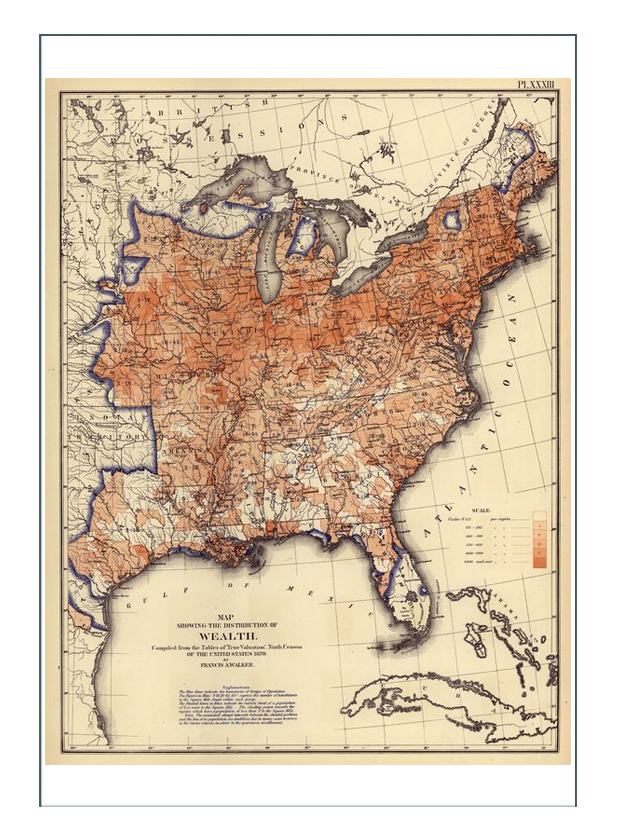
Place and Time
1866 is the year selected, because it was nearing the end of the pioneer trail migrations; notably the Mormon and California Trails which passed through the southern parts of the states being depicted. Completion of the transcontinental railroad in 1870 ended most wagon train migration.
It is Fiona’s intent to portray a young girl on a wagon train through her eventual settlement; possibly staying in a fort or western town, or being flexible in character to portray a Homesteader or settler in a sod or log shanty of the late 860 to early 1870 era. She would interpret the skills and education of girls at that time, possibly performing interpretation at prairie schools.
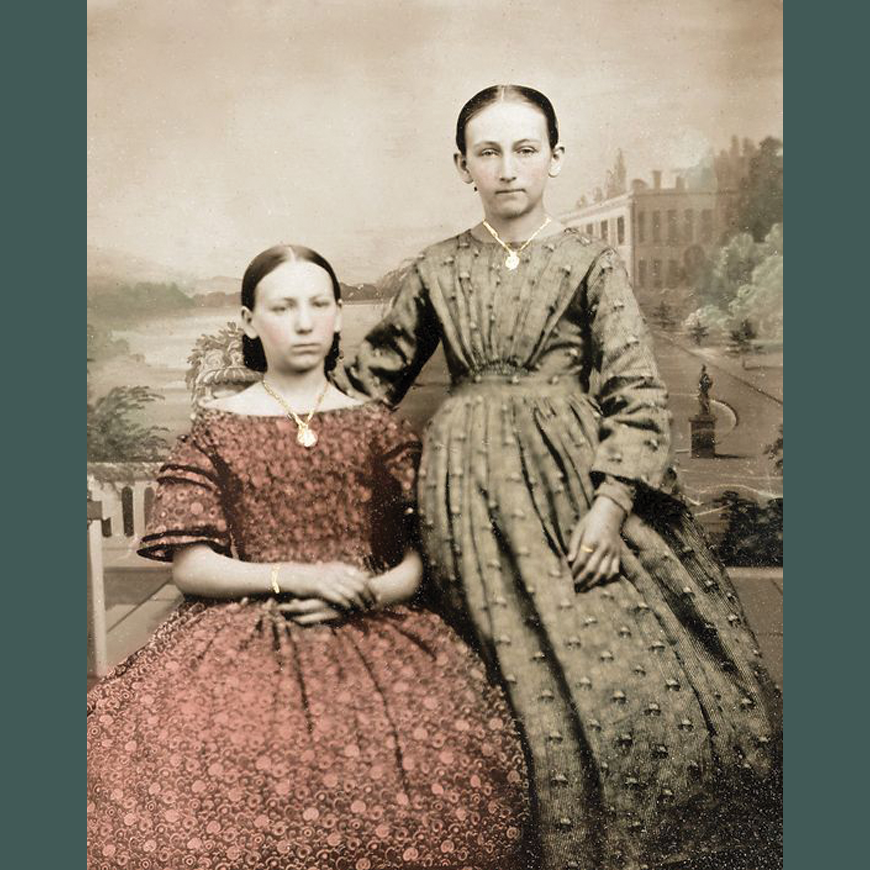
Because her goal is to be flexible in interpretation from 1860-70 (into 1880’s possibly), with her changing body, and to depict trail, fort, settlement, or wilderness, her ensemble will need to also be somewhat “generic” (not date specific) or at least changeable to suit the setting or situation. It will also need to be alterable to fit, because she will have growth spurts during the next year, and does not want to purchase new garments every few months. Child to Womanhood
Child to Womanhood
As illustrated from extant examples and portraits of children’s clothing of the 1860’s (Civil War) era vs. 1870’s was only slightly different in the West. Style was not the challenge, so much as fit and size. Once again, “access, availability, information” are keys to design.
Children’s clothing vs women’s clothing of the time was made distinct and on purpose. Girl’s dresses were short-sleeved, with mid-calf length, and included full body pinafores (presumeably because they got dirtier than women). Bonnets were the same – all females protected their skin. Boots for both were functional, leather, and button up, although lacing was possible if a woman had access to manufacturers.
Skirts for all to be fashionable were as wide as possible. The crinoline of 1866 was waning in size a bit, mostly due to lack of fabric in post war time more than fashionable preference. Girls and women would still wear them if they could, and those with wealth and access did.
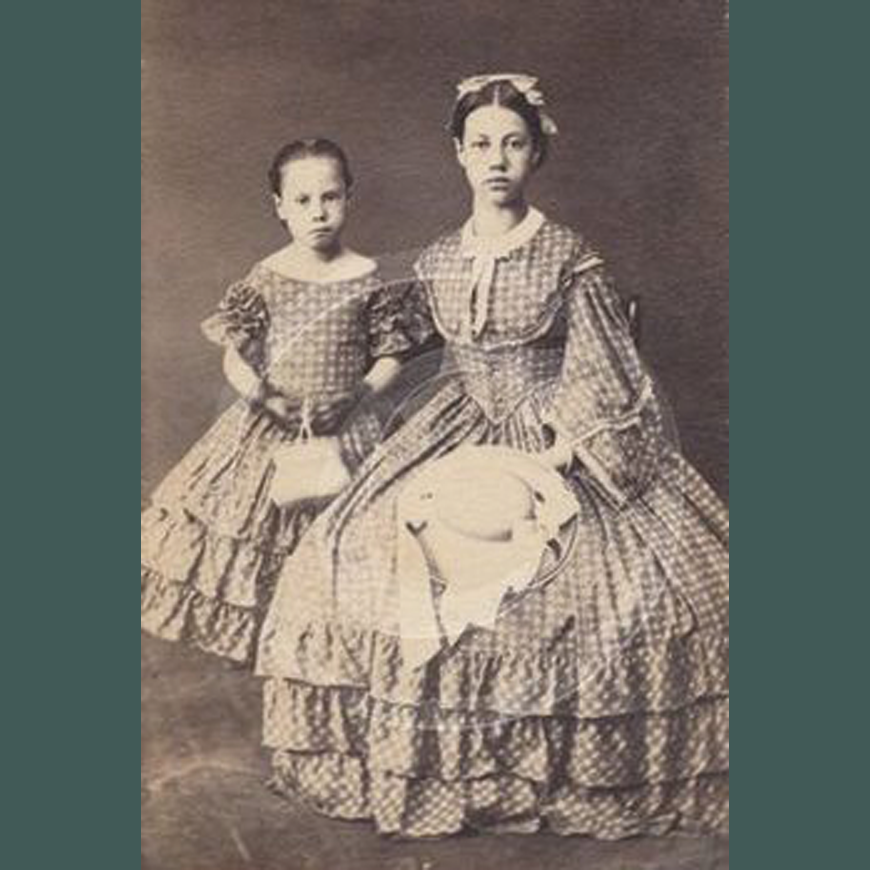
Western girls and young women’s skirts were lesser – more like 160″ in diameter than the 8′ at the hoops’ heydey in 1862, and they could not carry crinolines or extra petticoats across the prairies. They did still try to attain width using gathers or crinolettes. This was alike for both women and girls.
As a girl became a woman, her skirt lengthened (for modesty), her apron became a waist-tied or bib fronted apron (so you could take it off to appear fancy) instead of a smock, sleeves lengthened (but were of the type they would stay pushed above the elbows, or could tie into different functional positions), and the corset tightened.
Girls began wearing corsets as early as age 3, although those were more like “thunder vests” to swaddle in comfort. By age 6, the corset became somewhat constrictive, to begin the process of shaping the body. By age 11, Fiona’s character would have the corset shape well into development. Extant samples between ages 11 and 14 show significant shape change in corsetry with tighter constrictions that coincided with natural curves coming with womanhood.
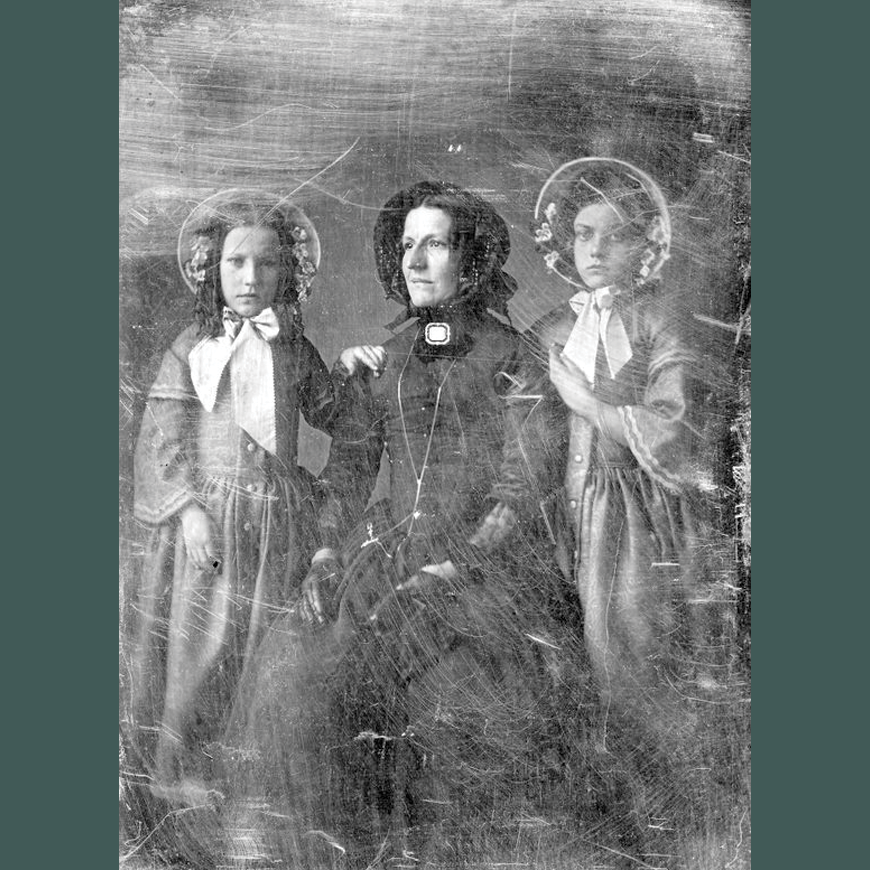
Woman’s Role; Therefore go the Girls
Depicting a teen of 1866 means depicting a woman preparing to leave home. Fiona has a great opportunity to teach children and teens the vast difference between life in early American settlement, and today.
Every skill used in 1866 by an 11 year old girl would be absolutely functional in daily life, plus preparing her for life as a married woman. A most interesting point prior to 1900, is that all women and girls did ALL the jobs of farm and household, but boys and men only did “man” chores.
This means Fiona would have:
- prepared all the meals alongside the women
- done chores specifically for all children; e.g. feeding stock, milking, gathering eggs, gathering wood, building fires, carrying water
- of most note is the children did all the carrying of fresh and waste water; presumably also chamber pots, although there is no historical note of this
- feed and tend for babies and all younger children
- maintain the gardens and fields
- drive a wagon or cart; run errands
- work with food gathering and storage (canning, prepping)
- serving and cleaning up
- repairing and altering clothing
- washing and drying laundry
- maintaining special facilities such as summer kitchens or smokehouses alongside an adult
- muck the stalls
- care for domestic animals
- clean house
- make household items such as washcloths, rugs, bedspreads etc.
If she had leisure time after this, she might play a piano like instrument, sing, tat, knit, sew, embroider, or make things like dolls out of available materials such as corn husks. It would not be for another 60 years a girl would be allowed to go swimming, would produce extra (eggs, sewing, etc.) to earn money for personal items, or be able to step outside daily chores long enough to take in sewing for profit or pursue a job.
It is little wonder women anxiously entered the work force in the textile or office businesses in the next century.
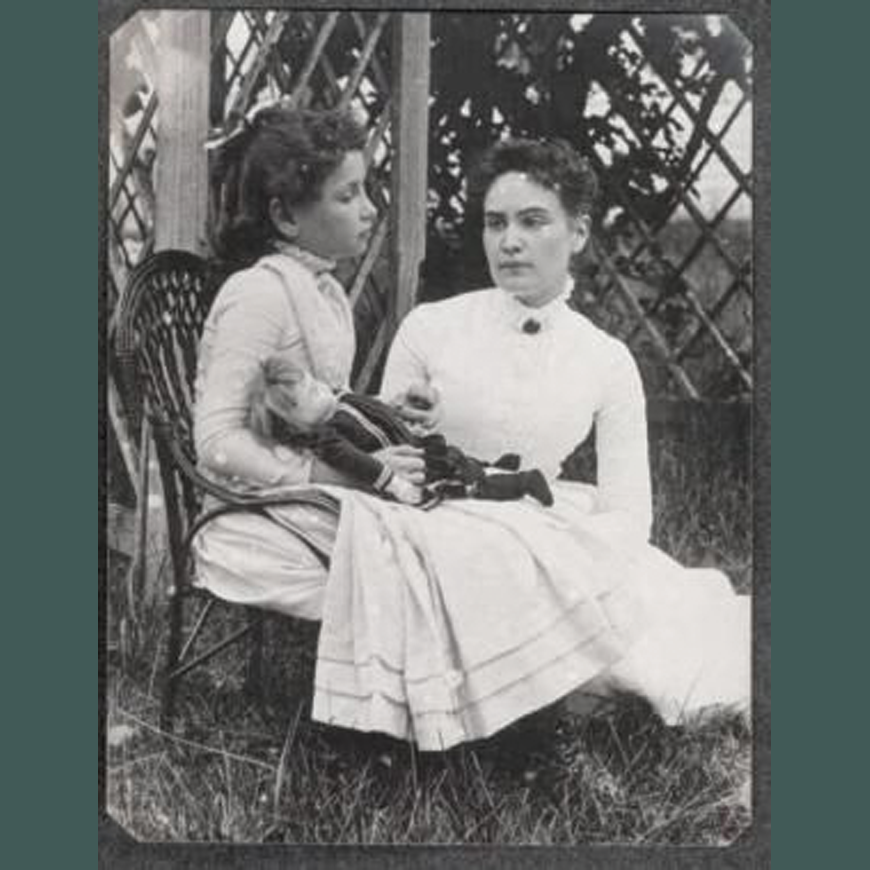
Education
Schools were entirely set up and operated by the local community (think Laura Ingalls Wilder’s “Little House” series which describe Laura as becoming a teacher at the equivalent of today’s 10th grade, and being paid for and housed in rotation by the locals in their homes). This meant education for a girl would be 1) based on location, 2) on availability of a teacher, 3) arranged around chores (which means on a seasonal schedule for rural America).
While boys were already being sent to “colleges” like William and Mary on the eastern coast of America, girls, especially those in rural or pioneer life, were limited to the very basics. A limited few traveled back east for advanced education while living with relatives, but most were home schooled, or schooled in a local school house.
By 1910, most of rural America had a one room school house almost every 2 miles (little known in our lore), but in 1866, these were few and far between.
Fiona’s character most likely would have been taught basic reading, writing, and “ciphering” (math) skills at home, with an occasional school session as teachers came or went from their community or location. She most likely would have some sorts of “primers”, handed down from mother to daughter.
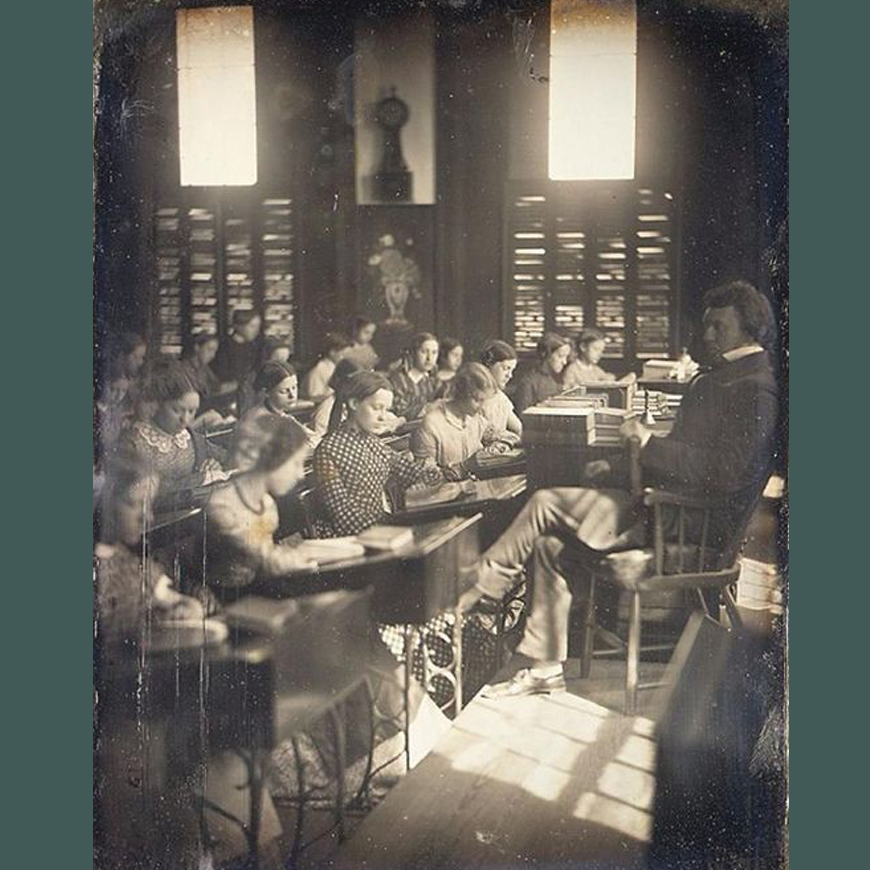
As with clothing, education would have been based on accessibility, availability, and in this case – motivation of the parents.
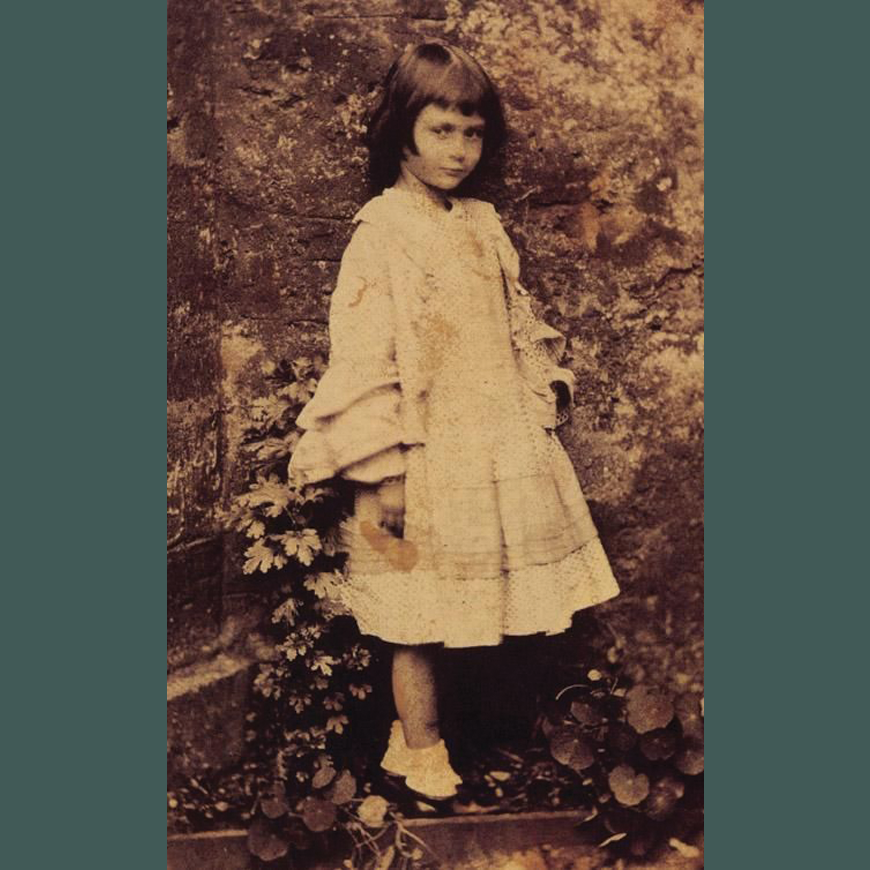
More Real Pioneer Women of the 1840’s-1870’s
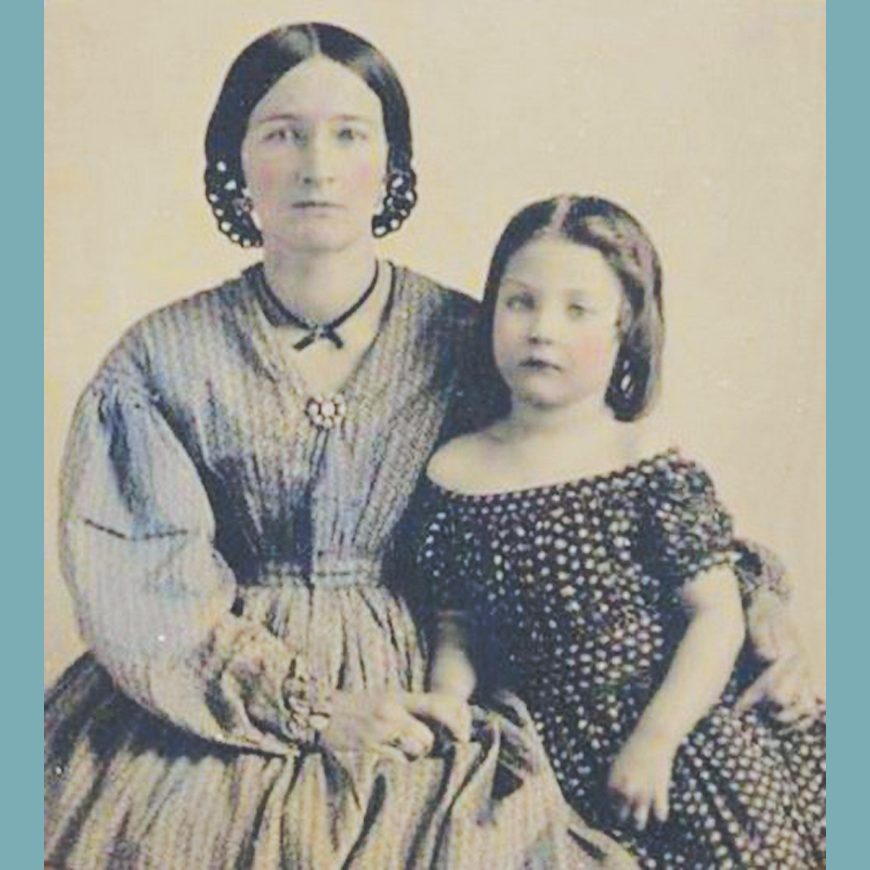
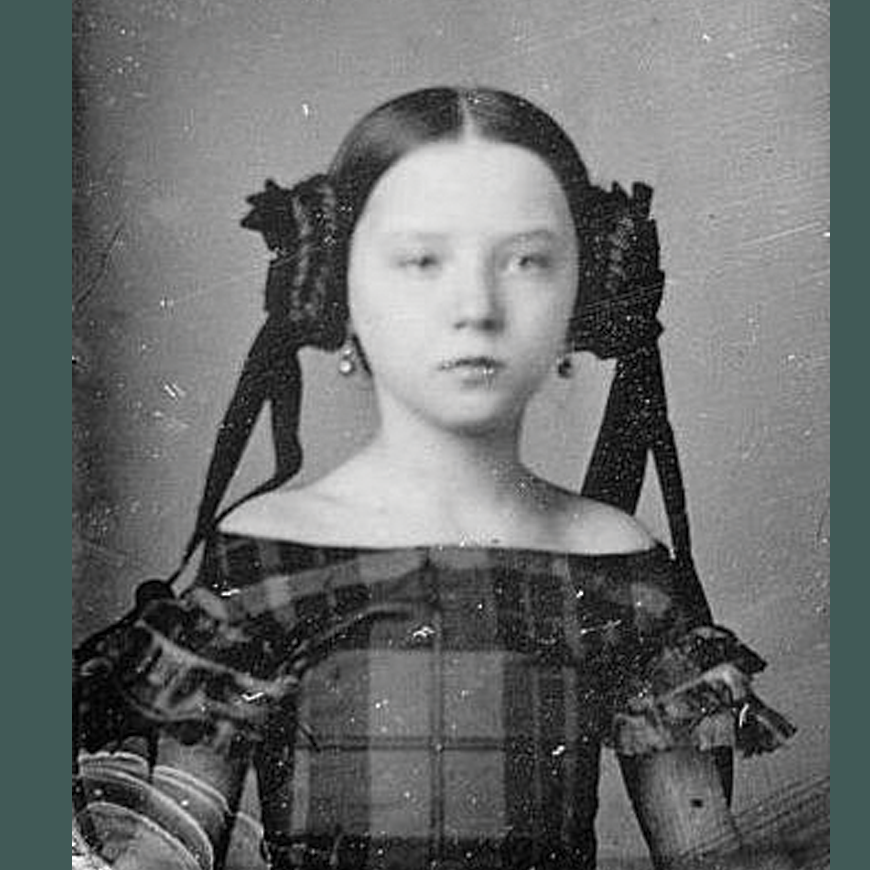
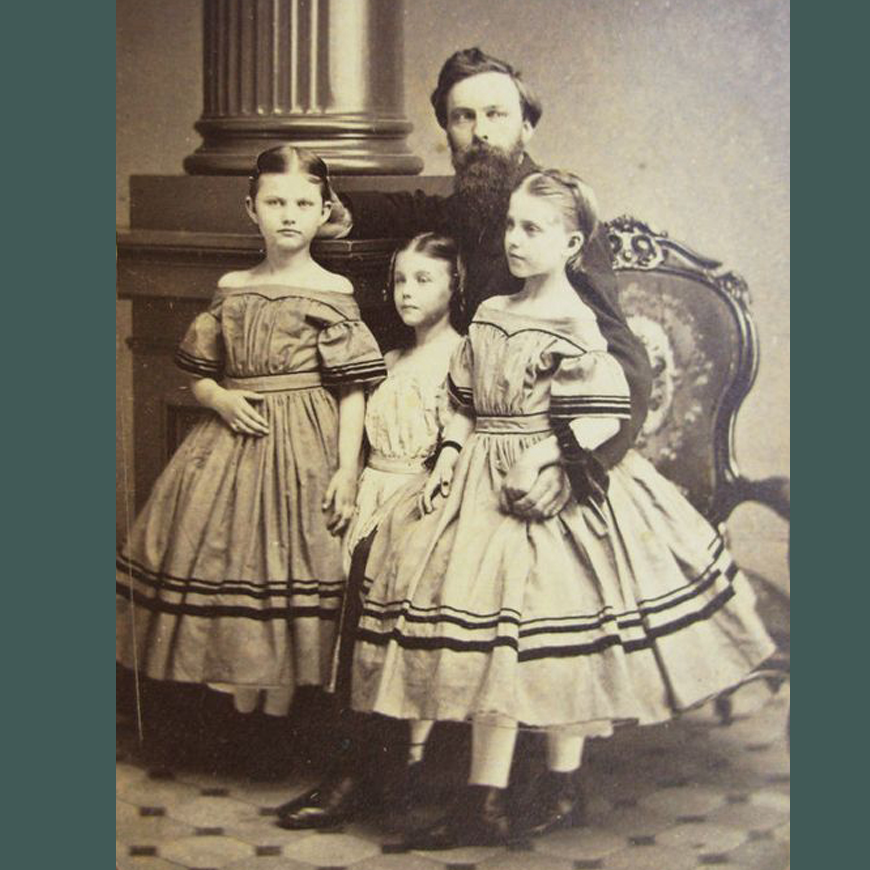
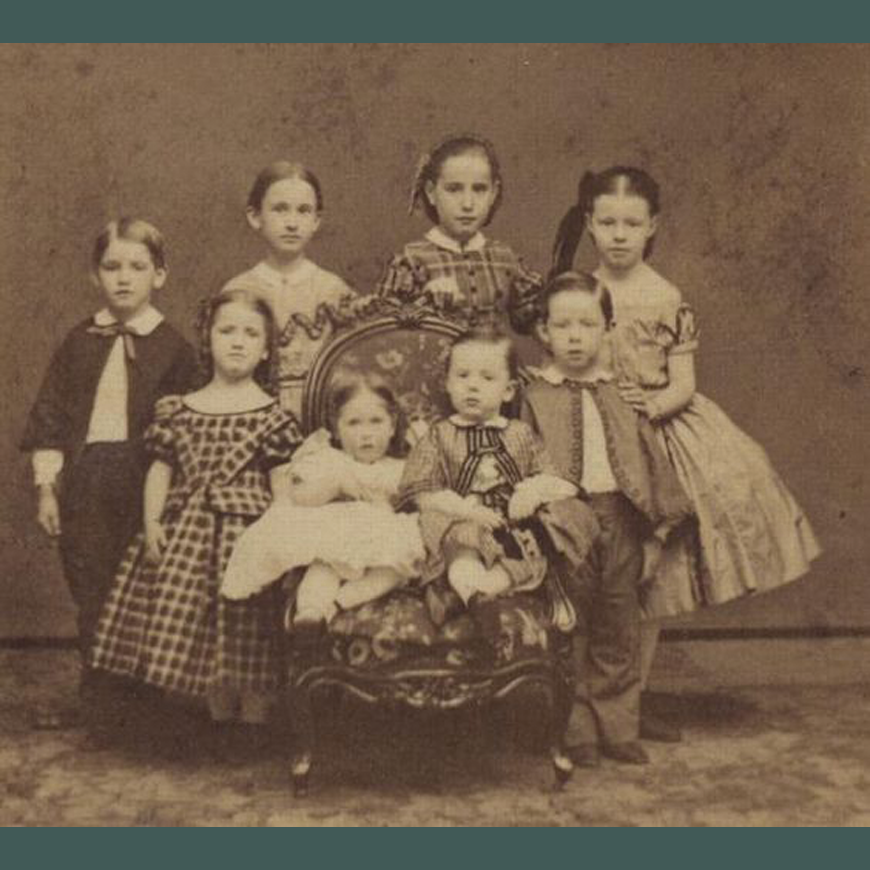
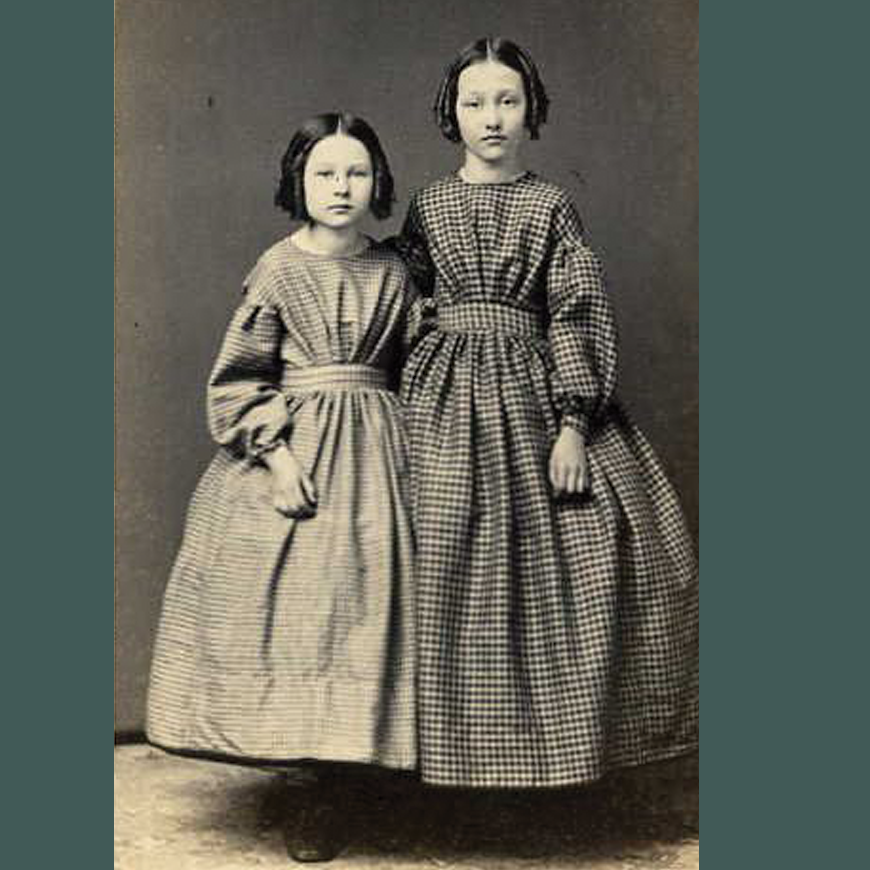
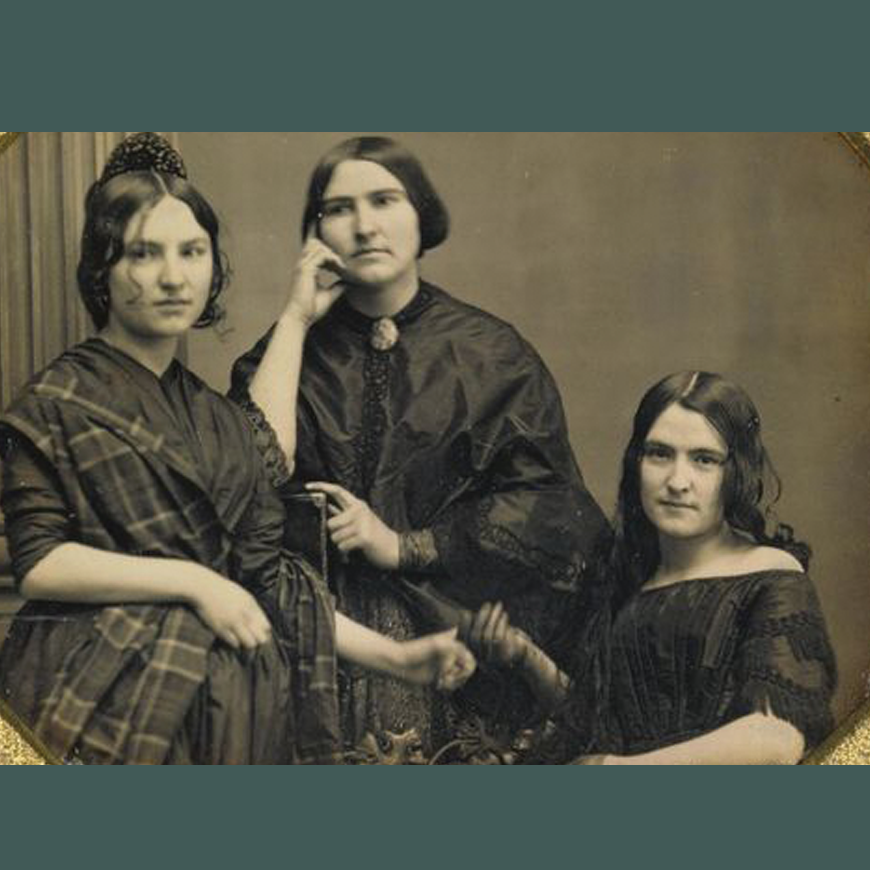
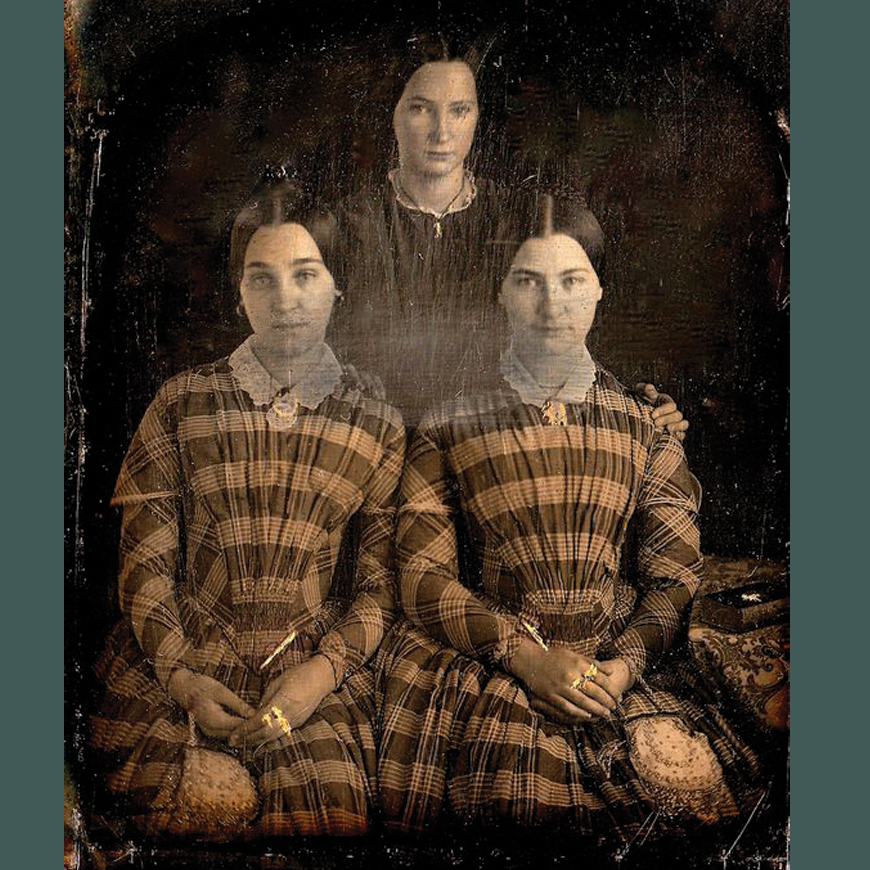
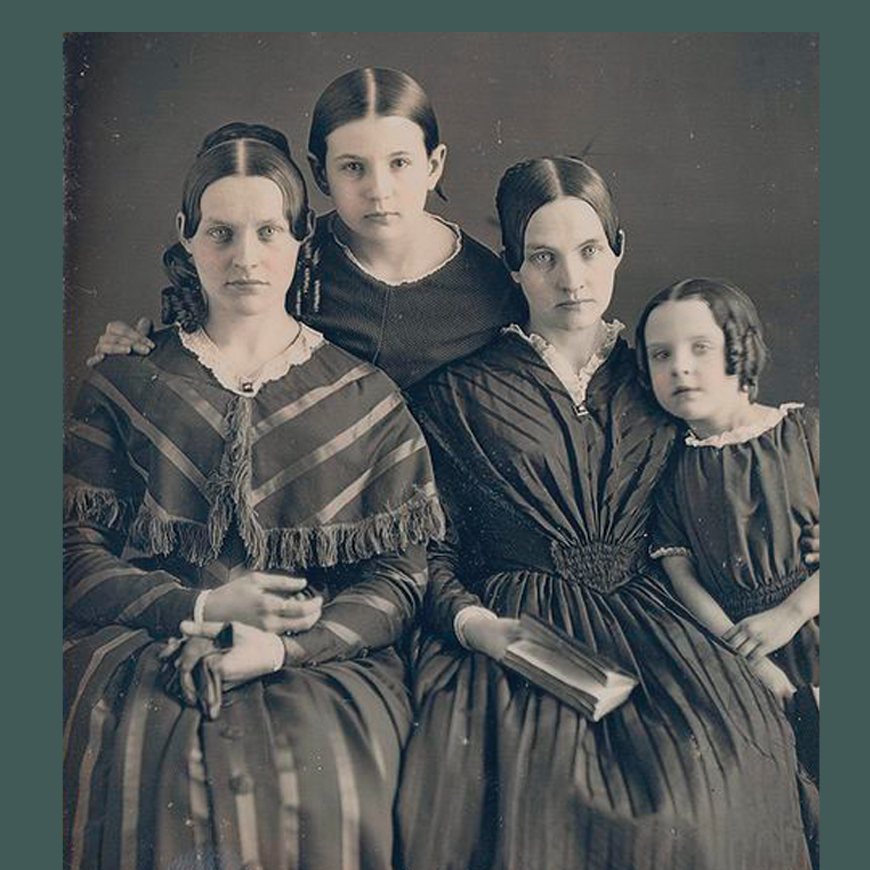
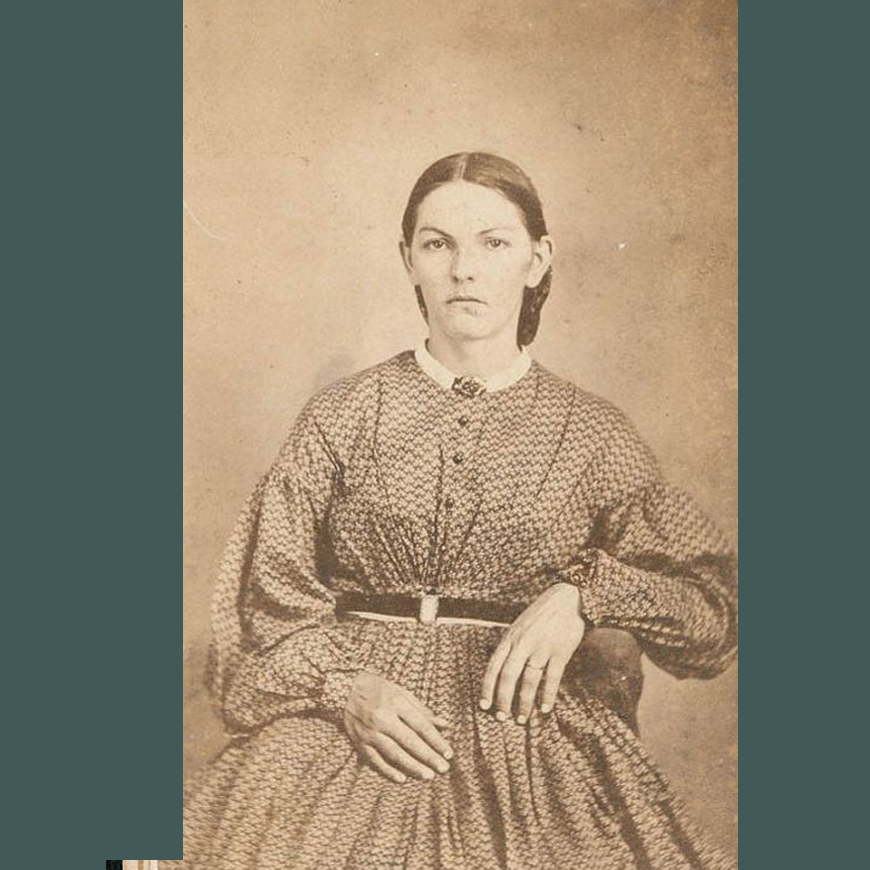
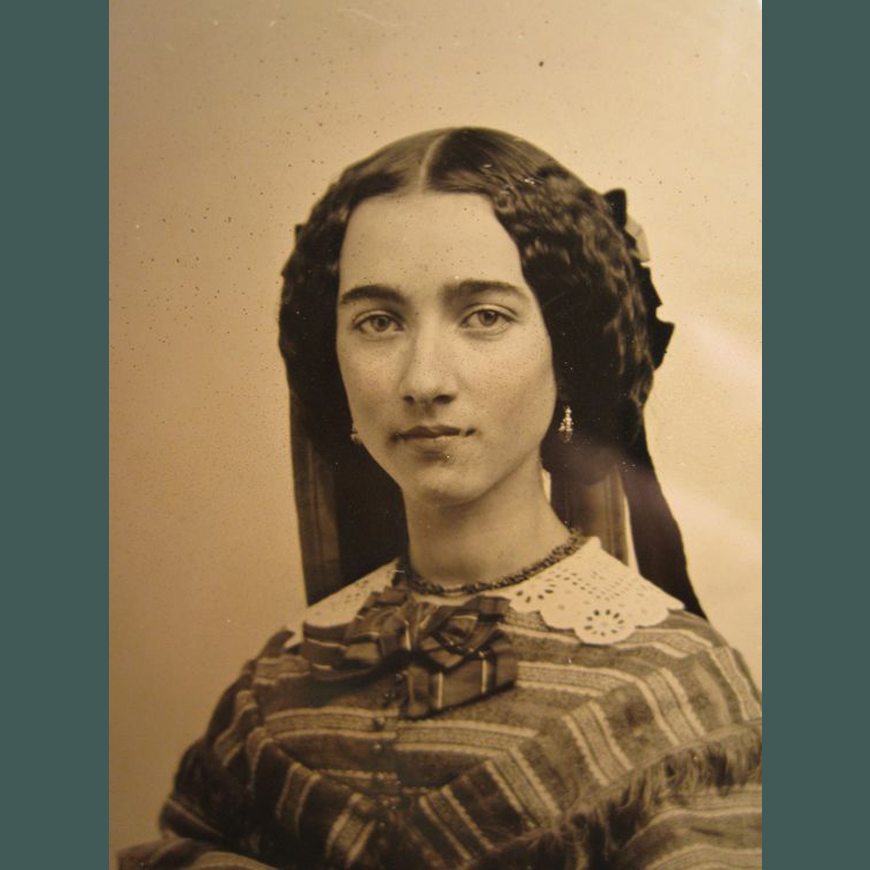
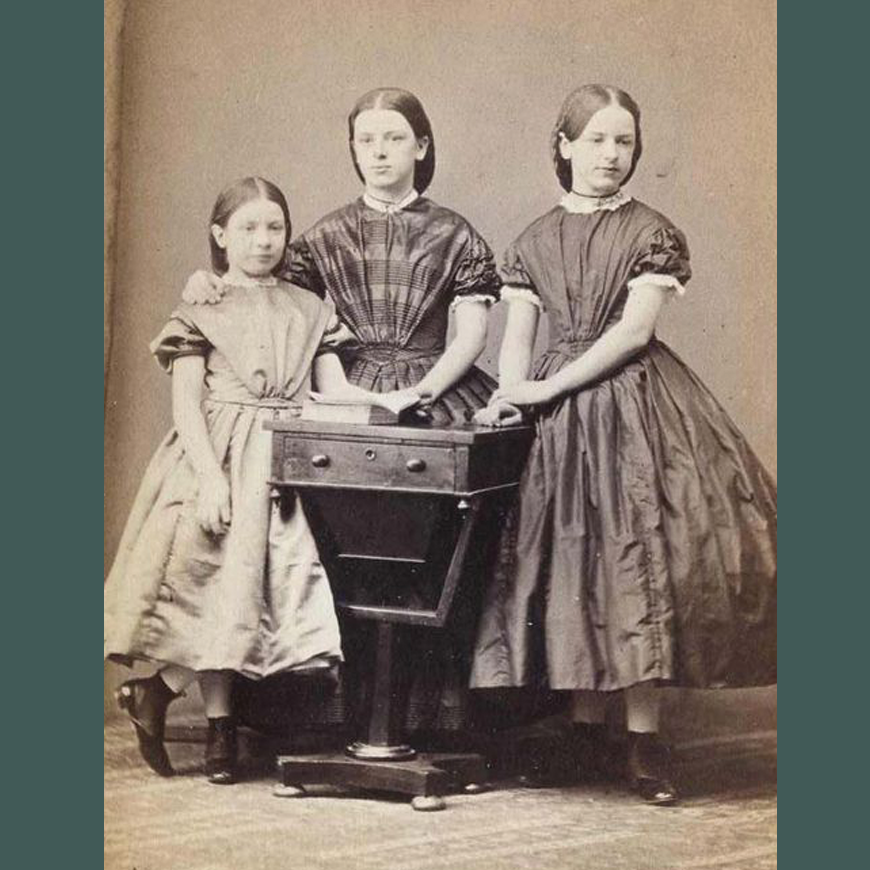
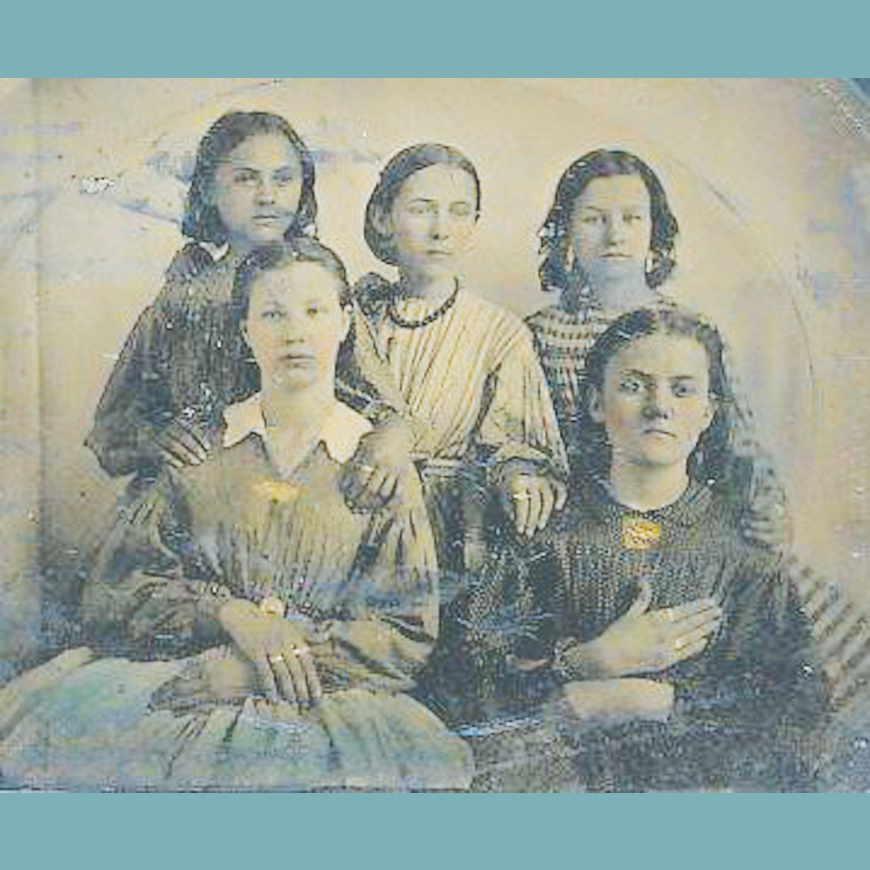
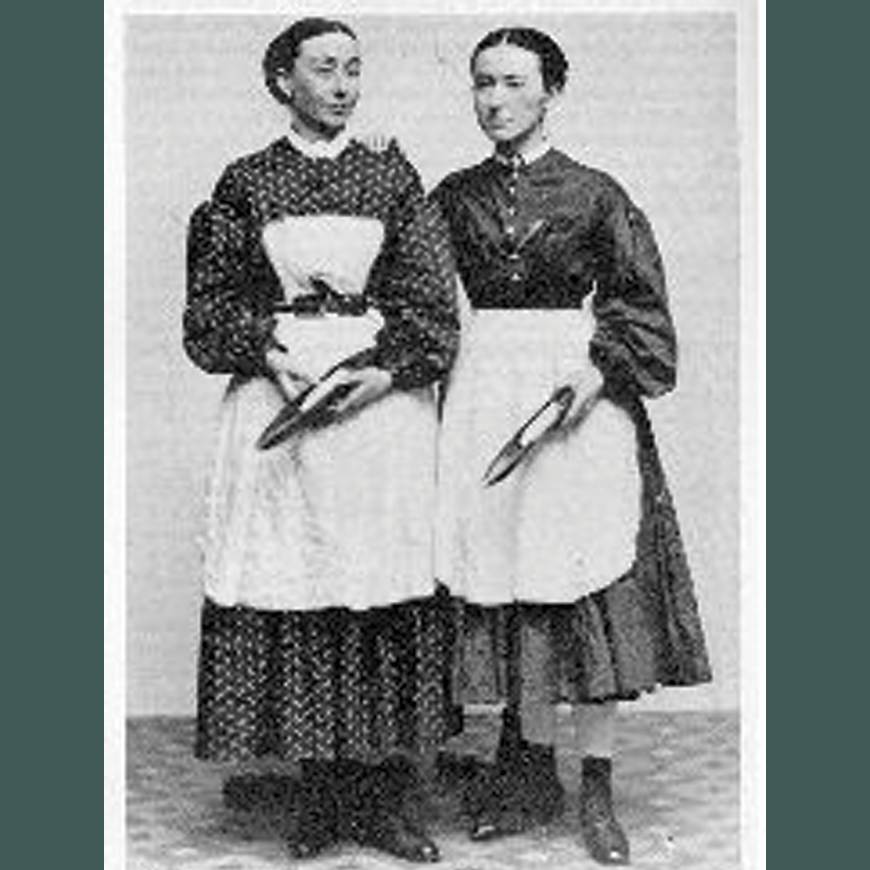
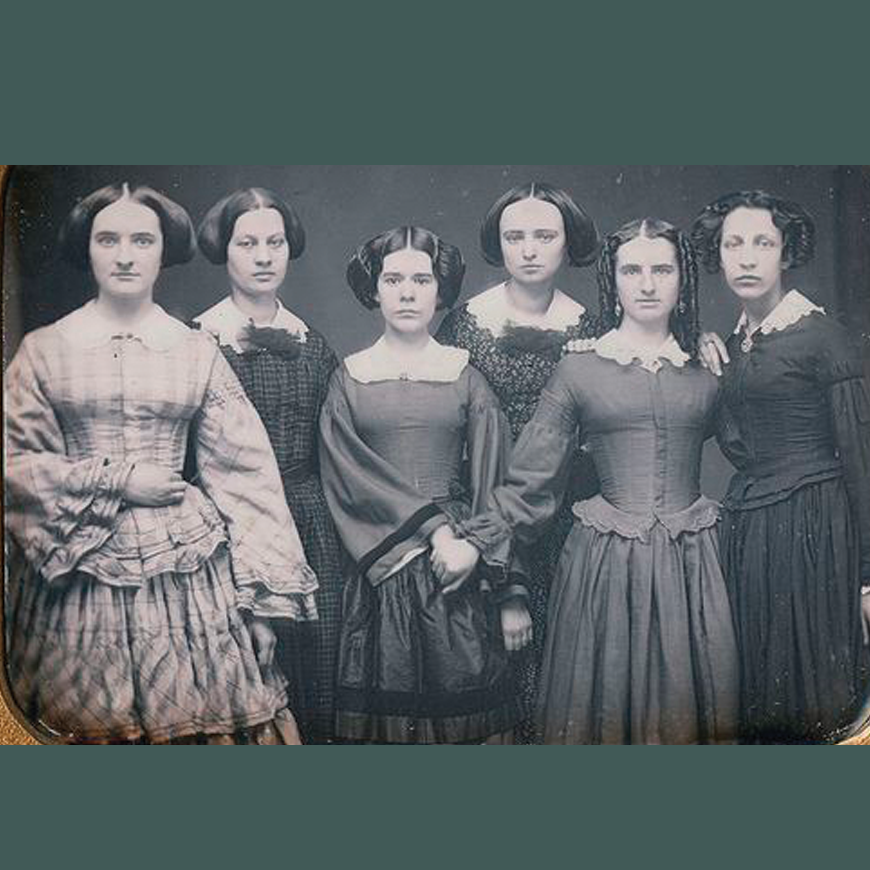
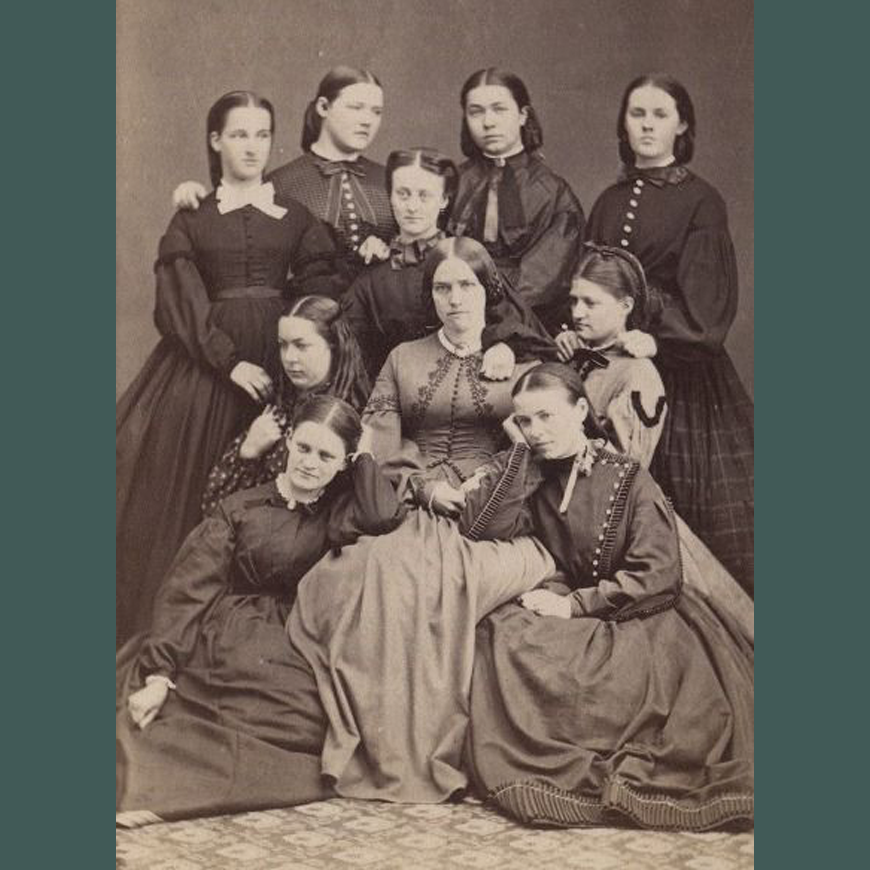
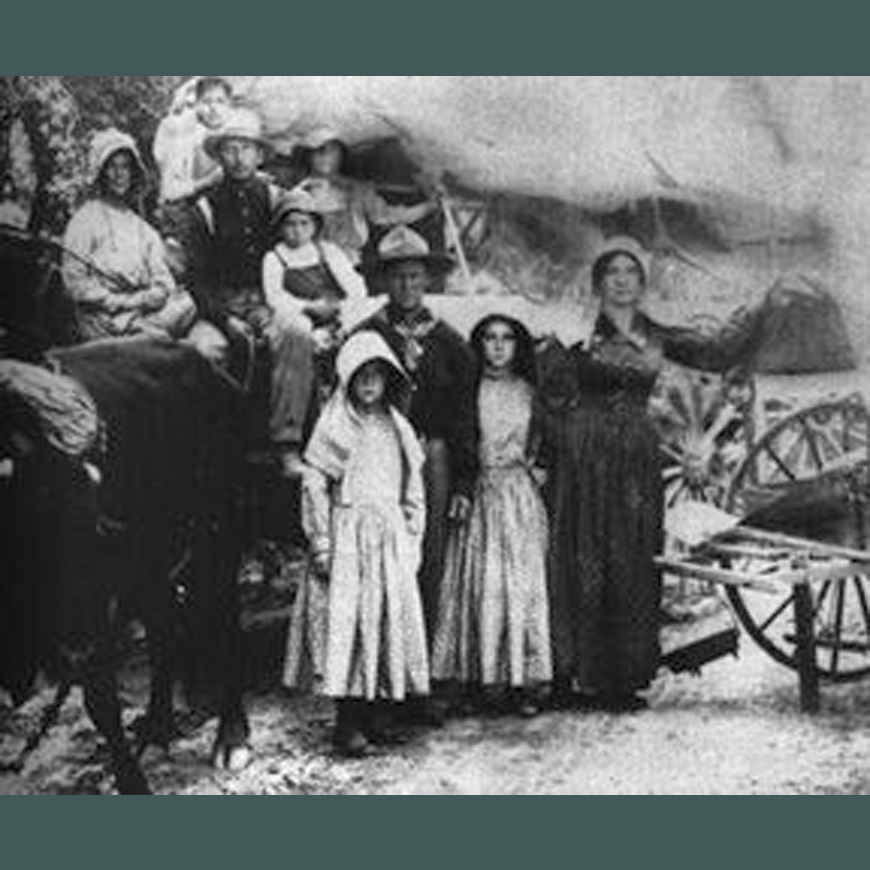
Fashion Clues From a Real Life Pioneer
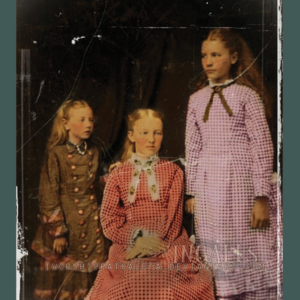
Laura Ingalls Wilder wrote about her real life illustrator. She and her illustrator, Garth Williams of the 1930’s, gives us perhaps the most direct and real information regarding girls who grew into women during the 1870’s-1880’s, and the time Fiona is depicting.
While Laura’s real age compared to the Laura in her books is a bit mixed up chronologically, we still get a sense of reality of a girl turning to womanhood. Laura was born in 1867 in Wisconsin. When she was 2 in 1869, her father moved the family to what is now Independence, Kansas. They settled on Osage land, however, and returned to Wisconsin in 1871, which begins the stories with an actual 5-7 year old Laura.
Little House in Big Woods
In the first book about Laura Ingalls, the family lives in a log cabin in Wisconsin. They rarely see other people, and are basically self-sufficient – meaning they grow, make, or obtain all they need for themselves to survive. They do trade and visit.
In this book, the fashion of Laura and her sister (baby Carrie is still a baby) are those of children – short skirts, short ruffled sleeves, and pinafores. Their hair is notably short, and as time goes on, that grows as the girls do.
The girls were already taking note of what they would need to be fashionable women, even in the deep woods. This excerpt from “Big Woods” describes the aunts coming for a dance in about 1872:
“Laura sat on their bed and watched them comb out their long hair and part it carefully. They parted it from their foreheads to the napes of their necks and then they parted it across from ear to ear. They braided their back hair in long braids and then they did the braids up carefully in big knots…
…Then they pulled on their beautiful white stockings, that they had knit of fine cotton thread in lacy, openwork patterns, and they buttoned up their best shoes. They helped each other with their corsets. Aunt Docia pulled as hard as she could on Aunt Ruby’s corset strings, and then Aunt Docia hung on to the foot of the bed while Aunt Ruby pulled on hers…
..She said “Caroline says Charles could span her waist with his hands, when they were married.” Then Aunt Ruby and Aunt Docia put on their flannel petticoats and their plain petticoats and their stiff, starched white petticoats with knitted lace all around the flounces. And they put on their beautiful dresses…
.. Aunt Docia’s dress was a sprigged print, dark blue, with sprigs of red flowers and green leaves thick upon it. The basque was buttoned down the front with black buttons which looked so exactly like juicy big blackberries that Laura wanted to taste them…
.. Aunt Ruby’s dress was wine-colored calico, covered all over with a feathery pattern in lighter wine color. It buttoned with gold-colored buttons, and every button had a little castle and a tree carved on it…
.. Aunt Docia’s pretty white collar was fastened in front with a large round cameo pin, which had a lady’s head on it. But Aunt Ruby pinned her collar with a red rose made of sealing wax. She had made it herself, on the head of a darning needle..
.. They looked lovely, sailing over the floor so smoothly with their large, round skirts. Their little waists rose up tight and slender in the middle, and their cheeks were red and their eyes bright.. Ma was beautiful too, in her dark green delaine, with the little leaves that looked like strawberries scattered over it. The skirt was ruffled and flounced and draped and trimmed with knots of dark green ribbon, and nestling at her throat was a gold pin.”
It is interesting to note that by 1871, that while the narrow waist was indeed still in style with the short corset, the first bustle era had begun, and the wide skirt with crinoline (or starched petticoats used her) was out of fashion. Ma Ingalls seemed to be consistent with the newer fashion than the aunts.
From this book we learn:
- A pioneer girl has maybe 2 dresses; one for every day, and one to change into (nothing for fancy)
- Stockings, underwear, and clothing is all handmade
- Pinafores and aprons are a must
- Hair ribbons are rare and special
- Buttons are of bone or pearl
- Lace or “fancy work”, and even jewelry is hand made unless passed on as heirlooms
- Most items are made of local materials, or traded for natural materials such as furs or syrup
- Every scrap was used and re used for something – nothing was wasted
- Girls and women wore side-button leather boots with cotton stockings
- Hairstyle was determined by age
- Women were about 8 years out of the current east coast fashion, and about 10 years out of European fashion
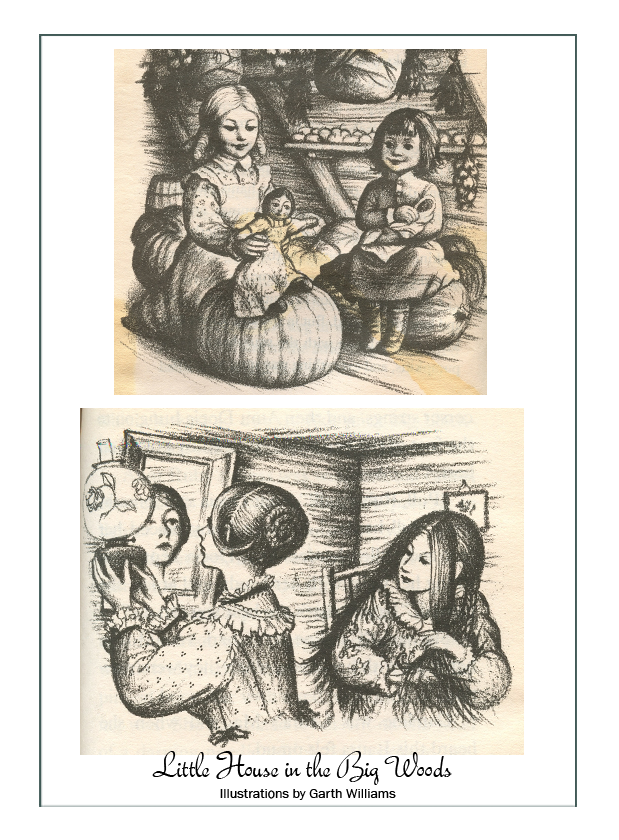
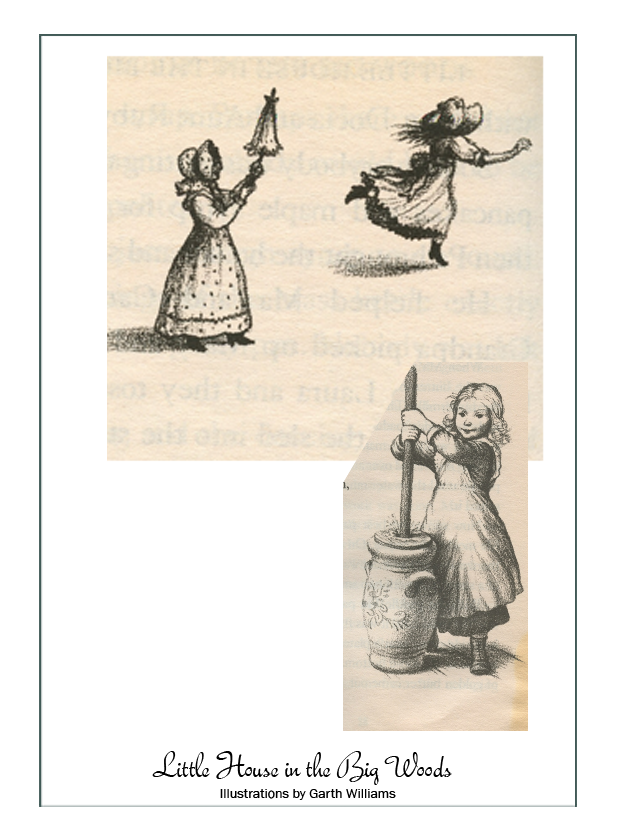
Little House on the Prairie
The 2nd book is the most well-known of the series. In this the girls travel by covered wagon, not in a train, but alone as a family with all their possessions from Wisconsin to Kansas. The family builds all they need to survive; a log cabin, well, chimney, and all the comforts of a home. It seems they might be settled at last until they realize they are in Indian Territory and their house sits right on an Indian Trail.
While the girls interacted with many people, they were basically isolated from towns or social situations. Their fashion was that of strictly function. In this book Laura is 6-7 years old; still wearing girls’ clothes, while her older sister Mary starts to show signs of impending womanhood.
Every day life and their garments are indicated in this “Little House on the Prairie” excerpt:
“Ma brought the wooden pannikin of soft soap from the wagon. She kilted up her skirts and rolled up her sleeves, and she knelt by the tub on the grass. She washed sheets and pillow-cases and white underthings, she washed dresses and shirts, and she rinsed them in clear water and spread them on the clean grass, to dry in the sun.
…Mary and Laura were exploring… Ma was folding the dry clothes. The little panties and petticoats were whiter than snow, warm from the sun, and smelling like grass. Ma laid them in the wagon, and took the flowers….
…Then Ma took the sadiron out of the wagon and heated it by the fire. She sprinkled a dress for Mary and a dress for Laura and a little dress for Baby Carrie, and her own sprigged calico. She spread a blanket and a sheet on the wagon seat, and she ironed the dresses…
…She undressed Laura in the firelight and put her nightgown on and tied her nightcap, and tucked her into bed. The night was full of music..
…Ma packed all the clothing in two carpet-bags, and Pa hung them to the wagon bows inside the wagon…”
From this we learn the following:
- The girls and women had more than one dress – one in the wash, and one to wear while exploring or washing
- They only owned enough clothing between all 5 of them to fit into 2 suitcases
- Girls wore nightcaps and nightgowns
- Undergarments were white
- They wore drawers (“panties”) or knickers and petticoats – all of the females regardless of age and even the “baby”
- Clothes were ironed – even in the middle of the prairie with no one around. This value on cleansiness and neatness and fashion is evident in Ma throughout the books. She had come from a fashionable heritage in the East, and notes throughout indicate she missed being “in style” or having the latest fashions. That is probably why she keeps somewhat closer to current Eastern fashion throughout the books than most pioneer women would have – she made a point to stay in touch with her family there and to modify their clothing and household items to be fashionable, as is seen in the story about Pa building her a knicknack shelf.
- Up to about age 9, girls still did not do the washing, and did not have extreme chores as they would have in a few years; they still ran a bit wild and free as would a boy of the time (a boy of this time most likely would have more duties in caring for stock and hunting game on the trail).
Their chores were assigned more to house than trail later as they accumulated milk cows, chickens, and gardens considered women’s work
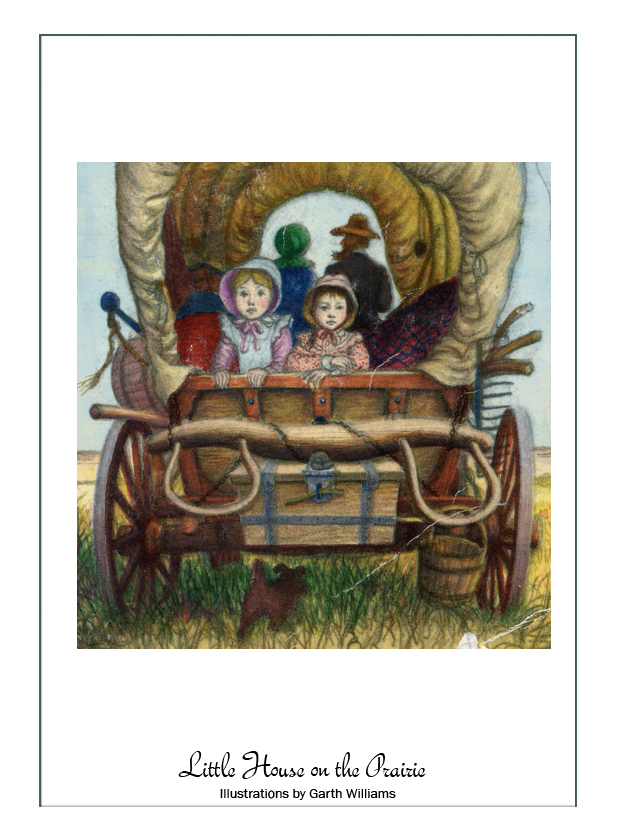
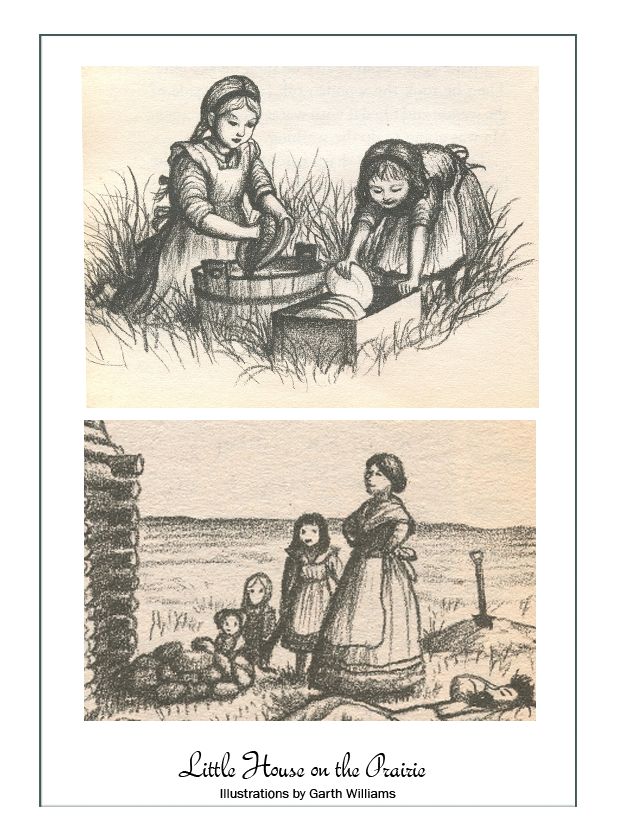
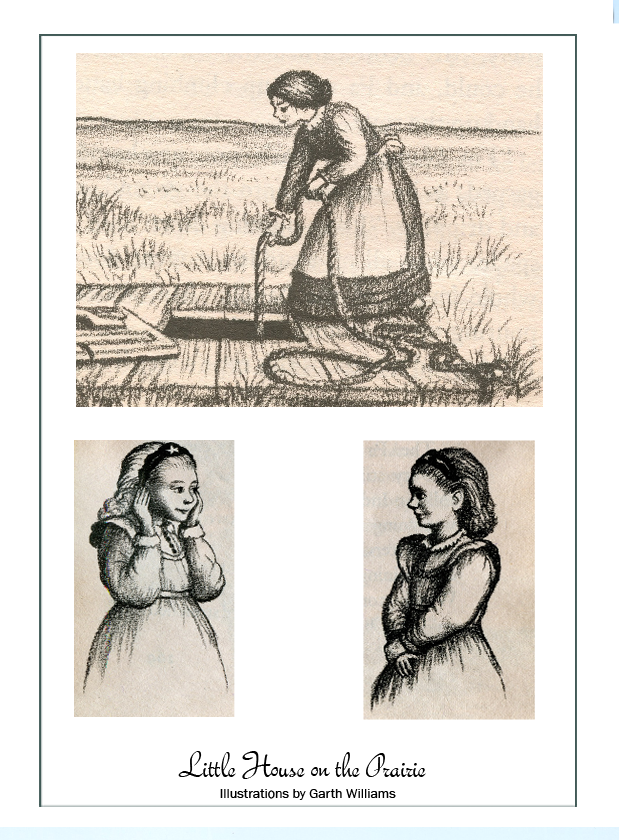
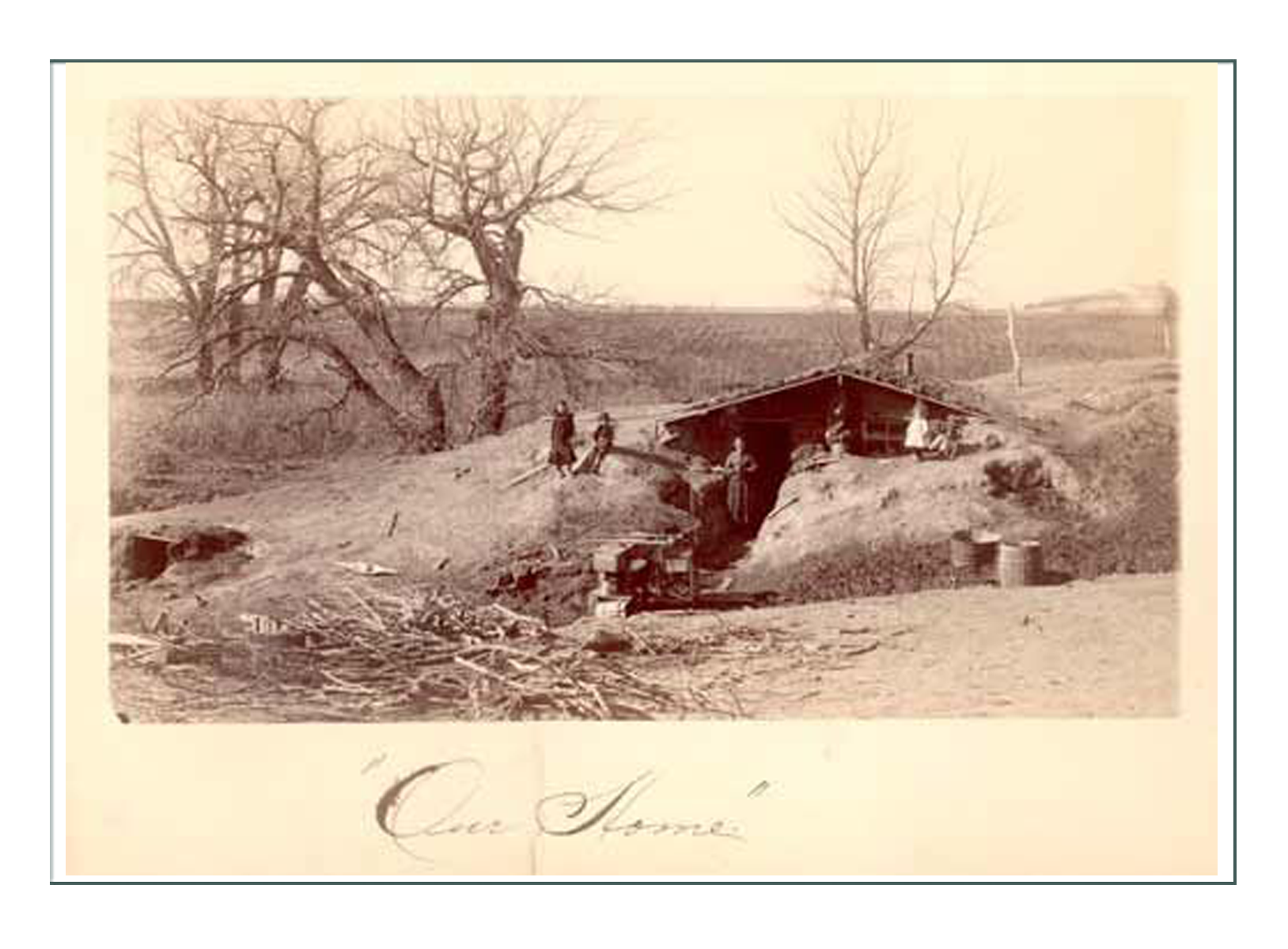
On the Banks of Plum Creek
Laura is 7-9 years old in this book which takes place starting in 1874. The family has traveled by wagon to Minnesota, where they have found an old sod house dug into the bank of Plum Creek. While Pa plants a wheat crop, he borrows building materials against his future crop, but a locust plague destroys the crop, forcing them to move on again.
The girls take on more chores as they obtain animals and gardens and the maintenance of a leaky house. Always washing and ironing despite the mud walls and floors Ma encourages the girls to go to an actual school at last, and to meet other children from the area.
Lessons in social strata and conflict over material possessions have the girls become a bit more worldly in their views. The following excerpt from “Plum Creek” shows how fashion and clothing affected behavior, in even a very small community:
“They waded carefully and did not splash their clean dresses.. Laura and Mary stepped carefully onto the grass. They would not walk in the dusty wheel tracks until their feet were dry, because their feet must be clean when they came to town…
….Pa had said that town was only two and a half miles away, and the road would take them to it…
“For pity’s sake, Laura,” said, Mary, “keep your sunbonnet on! You’ll be brown as an Indian, and what will the town girls think of us?”
“I don’t care!” said Laura, loudly and bravely…”
…She and Mary went slowly walking out into the dust and turned towards the noise of voices… Laura went along the path toward them and Mary came behind her. All those girls and boys stopped their noise and looked…
… Laura kept on going nearer and nearer all those eyes, and suddenly, without meaning to, she swung the dinner-pail and called out, “You all sounded just like a flock of prairie chickens!”
“Snipes yourselves! Snipes! Long-legged snipes!” a boy with red coloured hair yelled. Laura wanted to sink down and hide her legs. Her dress was too short, it was much shorter than the town girls’ dresses. So was Mary’s. Before they came to Plum Creek, Ma had said they were outgrowing those dresses. Their bare legs did look long and spindly, like snipe’s legs…
…Nellie Oleson was very pretty. Her yellow hair hung in long curls, with two big blue ribbon bows on top. Her dress was thin white lawn, with little blue flowers scattered over it, and she wore shoes…”
From this we learn several things:
- As throughout history, impractical clothing such as Nellie wore, indicated status and wealth, because it meant she didn’t have to do manual labor or get her hands dirty
- Kids can be very mean – then and now
- The Wilders had very little money, and no clothing to make new dresses from, or Ma would have made sure they had shoes and long enough dresses
- By this time, they were still wearing the clothes from 2 years earlier, and that all the alteration tucks had been let out
- Fair skin was valued
- Bonnets were disliked, probably by women as well as girls if they were to confess
- It’s good school was in the summer, or their feet would get very cold
- There was a status in fashion – from the golden and fair skinned, to the “Indian” prejudice
- Hair ribbons were obviously a status symbol, while bonnets were considered of the working class
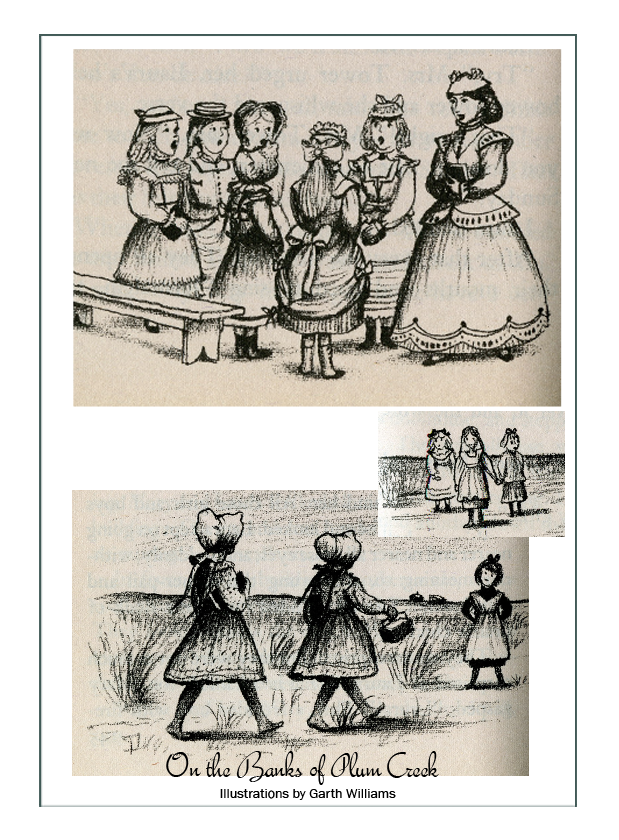
By the Shores of Silver Lake
Laura at last approaches the age of Fiona’s depiction. By the end of the book, it is New Year’s 1880, and Laura is approaching womanhood. After the failure of the wheat farm in Minnesota, Pa has taken the family in a wagon west again; this time to DeSmet, Dakota Territory.
The book opens with the family recovering from near death from Scarlet Fever, and the loss of Mary’s eyesight forever. It has them as the first to build on the shores of Silver Lake, in attempt to build a town on the basis of a nearby railroad encampment.
A blossoming teen, Laura and Ma feed hundreds of somewhat frightening men in an effort to help Pa raise the funds to build a house. They work side by side as women, while Mary and not so “Baby Carrie” do what they can to maintain their shanty home. In real life, they’ve lost a baby brother, and gained another Baby Grace.
Eventually, the family is able to gather some goods and luxuries, and live a bit more comfortably for a time. In this book, Laura meets the handsome and entreprenurial Wilder brothers, one of whom would become her husband.
In this selection from “Silver Lake”, we learn about the new lifestyle in a rented house with now 3 women in charge:
“Pa didn’t even have to set up a stove. He put Ma’s stove in the lean-to outside the back door, where the coal was… Ma set Mary’s rocking chair by the open oven door.. Ma made the big bed on the bedstead in the bedroom. She hung her clothes and Pa’s on nails in the wall there, and covered them neatly with a sheet. Upstairs in the large, low attic Laura and Carrie made two neat beds on the bedsteads there.. then they carried their clothes and their boxes upstairs; they hung the clothes on the gable wall by one window…
…everything was neat now, so they went downstairs to help Ma get supper… The surveyor’s house was full of secrets. Mary had knitted new, warm socks for Pa’s Christmas present. Laura had made him a necktie from a piece of silk she found in Ma’s scrap bag. Together in the attic, she and Carrie had made an apron for Ma from one of the calico curtains that had hung in the shanty. In the scrap bag they found a piece of fine, white muslin; Laura had cut a small square from it, and secretly Mary had hemmed the square with her fine stitches and made a handkerchief for Ma.
…There had been a blanket, striped across the ends in red and green. The blanket was worn out ,but the striped end was good, and from it Ma had cut bed shoes for Mary. Laura had made one, and Carrie the other, seaming and turning and finishing them neatly with cords and tassels of yarn…
…Grace’s present was to be the most beautiful of all… Ma had taken the swan’s skin from its careful wrappings, and cut from it a little hood. The skin was so delicate that Ma trusted no one else to handle that.. but she let Laura and Carrie piece out the lining, of scraps of blue silk from the scrap bag..”
We learn from this:
- Young women now took on the regular women’s chores of cooking, sewing, and cleaning
- By age 7 (Carrie), it was expected they do fine seam work; especially so by Laura’s age
- They wore “bed shoes” – which were fashionable to 1880, so they must have had information from the east to know about their design, or perhaps made them up
- Ma’s scrapbag had a lot of fine fabrics! Multiple silks and fine muslins.. never worn nor mentioned in any dress worn by a family member in all the books so far. One can assume these were either Ma’s undergarments that were not mentioned, or she brought the scraps with her from the east before the long journeys began
- They used every material until it disintegrated
- Laura seems to have “slowed down”; the book has her exploring, but always in context of watching a baby or carrying out a task like gathering herbs, etc.
- Illustrations show her in long skirts and a woman’s corset..
- And her bonnet of course
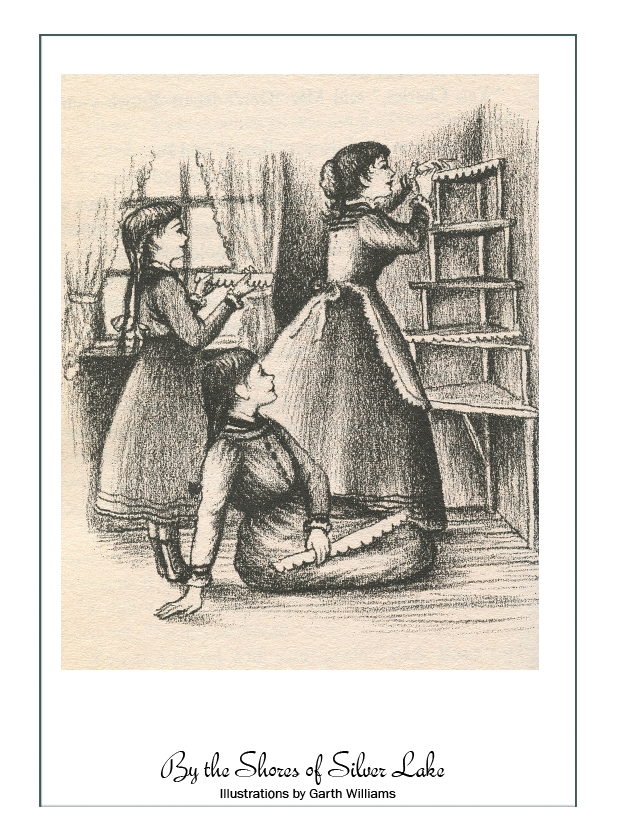
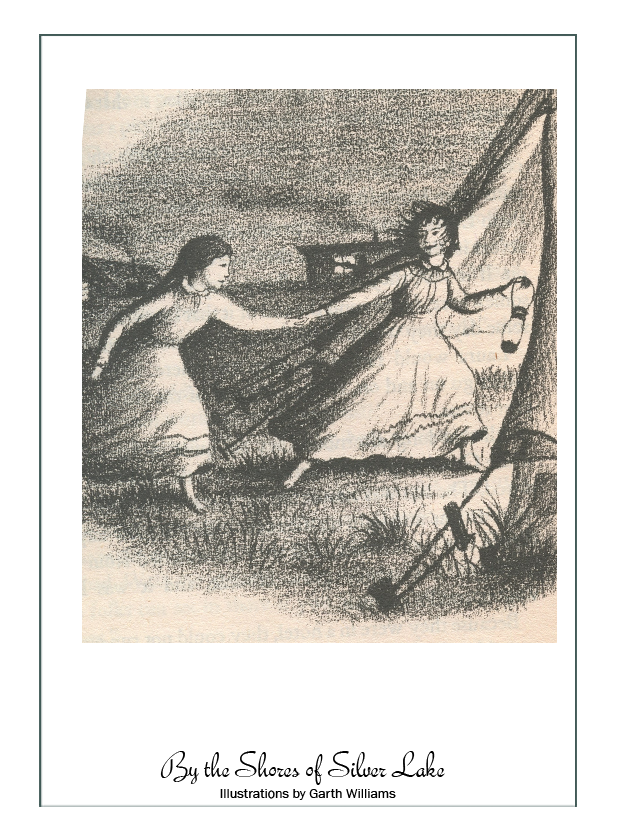
The Long Winter
This is the last book for this discussion, as it reaches (at last!) the age of depiction for Fiona. The family is still in DeSmet, and this book is entirely dedicated to one winter.
In this we meet Laura’s future husband, and learn about the food, housing, behavior, and clothing of a town cut off from everyone and everything, without the means to survive. It is a story about the change from subsistence living to dependence on trade goods, about men’s and women’s differing roles, and introduces the later books where Laura would be a young wife and mother on her own.
These excerpts illustrate Laura’s new role and attitude as a woman:
“Pa was glad to see Laura with the water jug. He got down from the mowing machine and drank a mouthful… Pa rode high on the open iron seat.. Laura sat in the grass to watch him go once around… Sitting hunched with her chin on her knees, Laura felt suddenly as big as a mountain when a snake curved up its head and stared at the high wall of her calico skirt…
…”Whoa!” Pa said, startled, “Laura! I thought you’d gone. Why are you hiding in the grass like a prairie chicken?”
“Pa,” Laura said, “why can’t I help you make hay?” Pa lifted his hat and ran his fingers through his sweat damp hair…”You’re not very big nor strong, little Half-Pint”
“I’m going on fourteen,” Laura said, “I can help.”
“Well,” Pa said, “maybe you can. We’ll try it.”
“Why, I guess you can,” Ma said doubtfully. she did not like to see women working in the fields. Only foreigners did that. Ma and her girls were Americans, above doing men’s work. But Laura’s helping would solve the problem. “Yes Laura, you may.”
By noon, they had hauled all the hay and finished the stack. Dinner was ready when they went to the shanty…. Laura was proud. Her arms ached and her back ached and her legs ached, and that night in bed she ached all over.. but she did not tell anyone….
…In the sunshine from the western windows Mary rocked gently, and Laura’s steel knitting needles flashed. Laura was knitting lace, of fine white thread, to trim a petticoat. She sat close to the window and watched the street, for she was expecting Mary Power and Minnie Johnson. They were coming to spend the afternoon, bringing their crocheting.
…Mary was talking about the college that perhaps someday she could go to. “I am keeping up with you in your lessons, Laura, “she said, “I do wish, if I do go to college, that you could go, too.”
“I supposed I’ll be teaching school,” Laura said, “so I couldn’t go anyway. And I guess you care more about it than I do.”
From this we learn about the attitude of pioneer girls in the 1880’s:
- They could plow and rake as well as they could crochet
- Despite their many abilities, there were only a few choices for their futures: teaching and marriage
- Men’s and women’s roles were clearly defined, but in the face of necessity, the lines blurred
- Fully a woman by age 14, fully corseted, with lacy undergarments, the girls were preparing to run a household
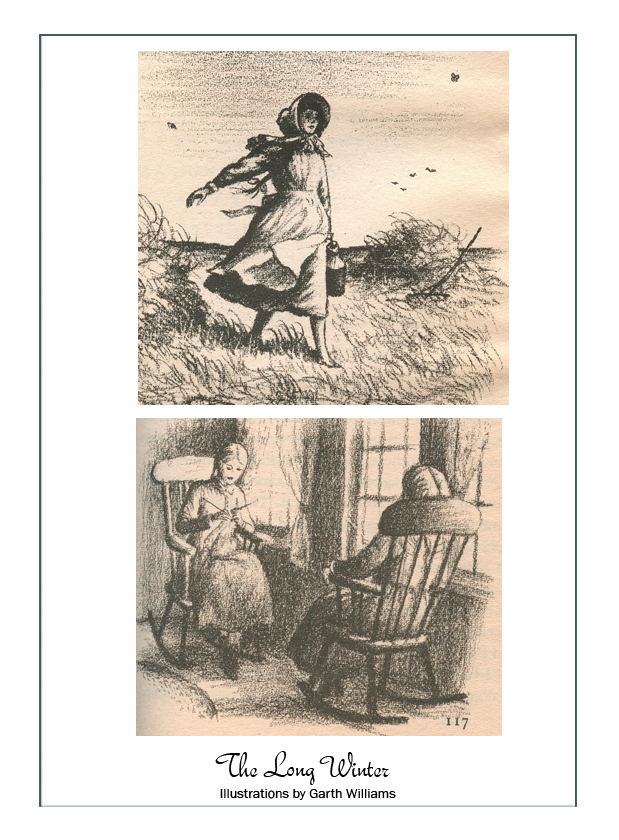

Real Clothing & Natural Colors
Following are extant (museum) samples of clothing, notably dresses, for preteens and young adult women from 1840 to the early 1870’s. Fiona’s character is to have flexibility to move between appearing childish to that of a young, married woman, as she would have in reality at the time.
Interesting note: many women’s and children’s cotton and wool clothing which appears to be tan, beige, or gold in extant samples, were in fact red or pink! Red range dyes of the era were still being developed, and did not last through time.
Note also the limited use of intense greens, blues, and purples in favor of teal (blue-green) or blue-purple. This is because America was quite self-sufficient in textile and clothing production by 1866, especially dyed cotton as it was the lead producer in the world by 1820.
Unfortunately, coming out of the Civil War, most cotton and textile production had been destroyed. This being almost 50 years later, it was just coming back with new technologies and designs. The next industrial revolution with innovations such as zippers, aniline dyes, mass production, and home sewing machines was just around the corner – but not yet. America was still made up of innovative and middle class people who worked hard using tools at hand and largely by hand.. for now..
Girls’ Dresses:
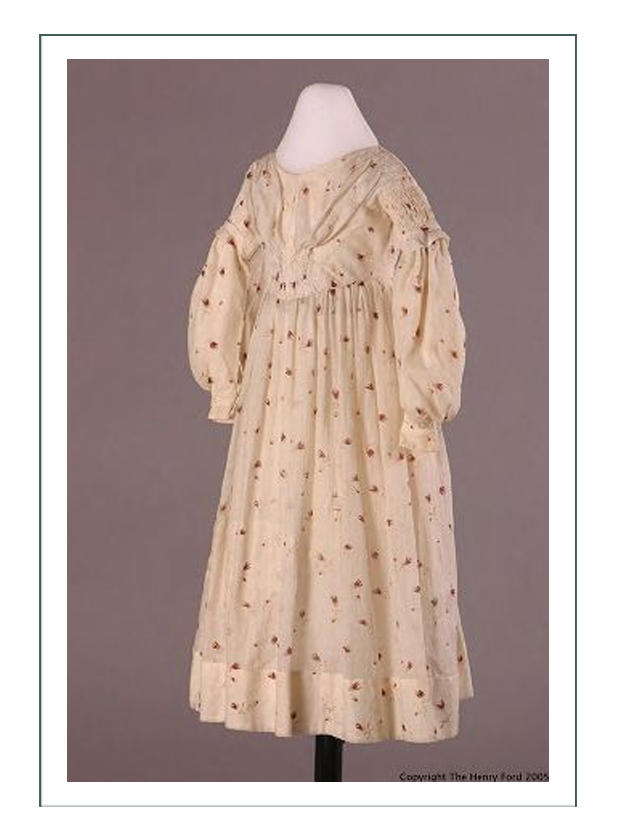
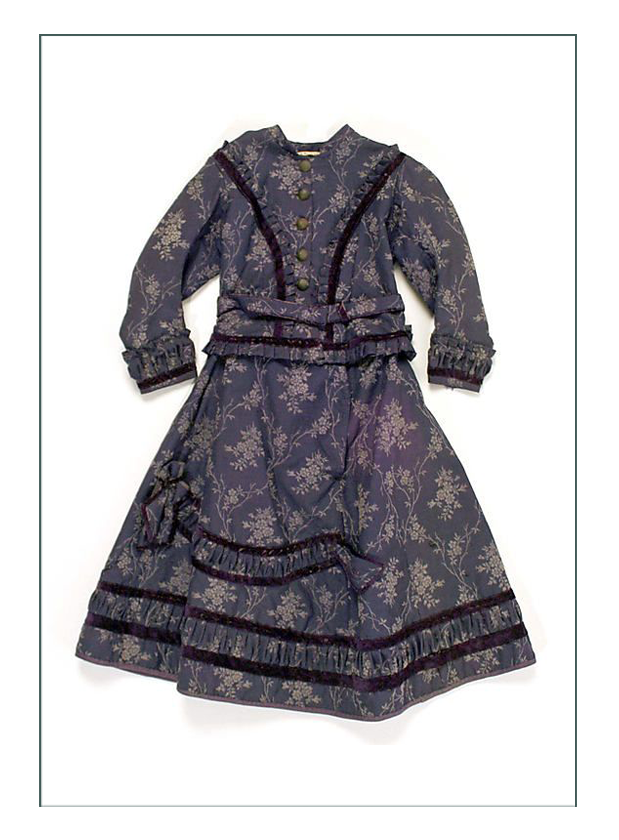
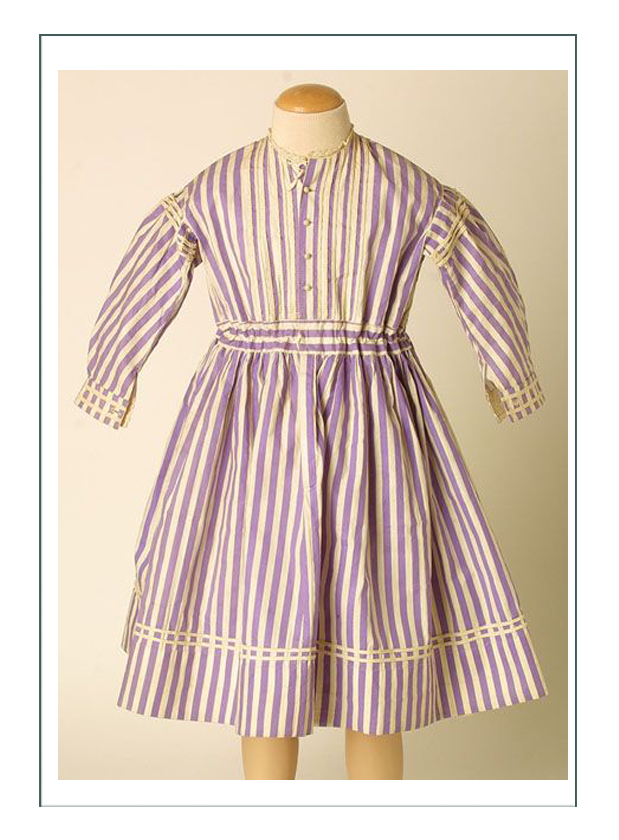
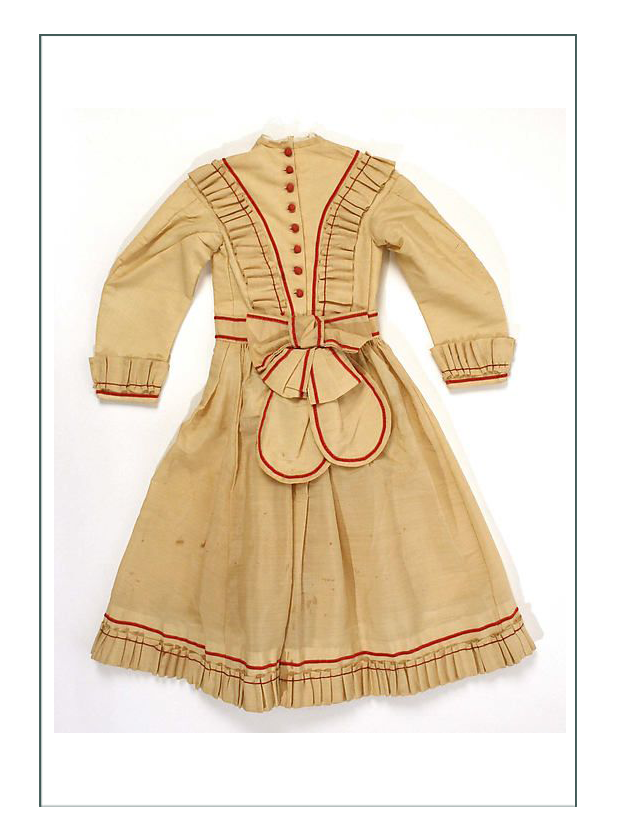
Young Women’s American Pioneer Dresses:
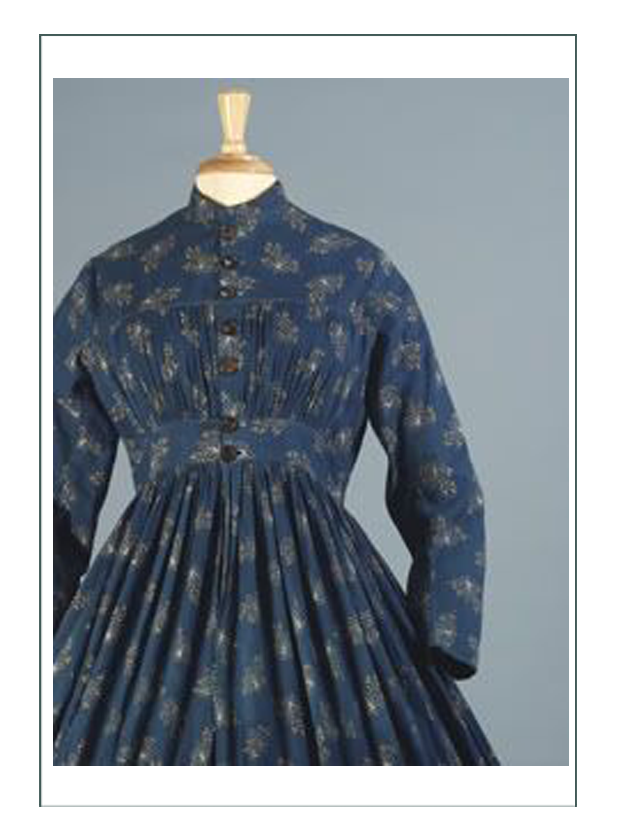
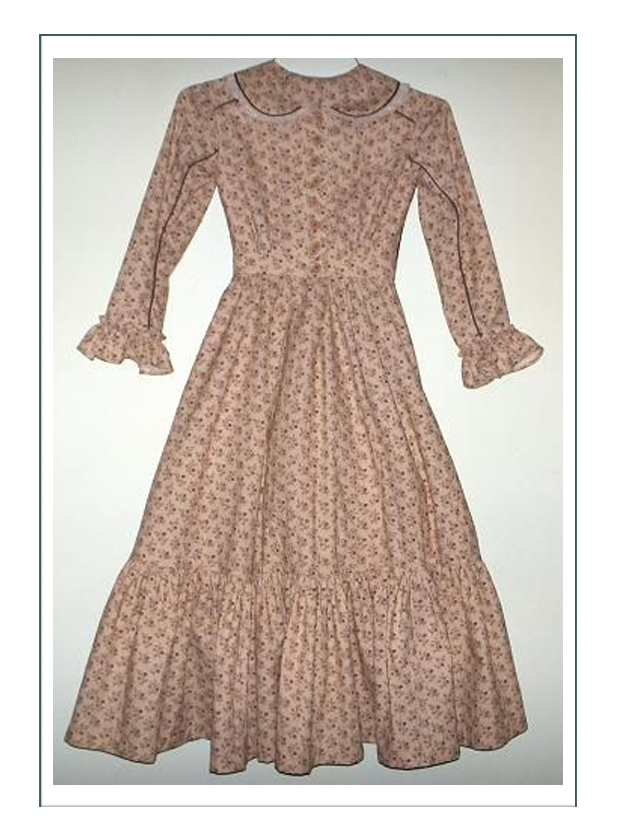
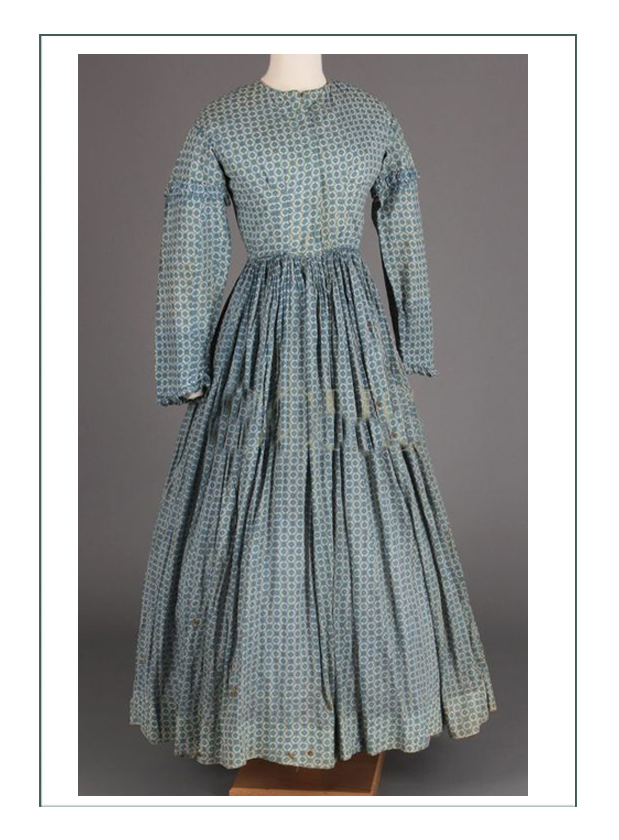
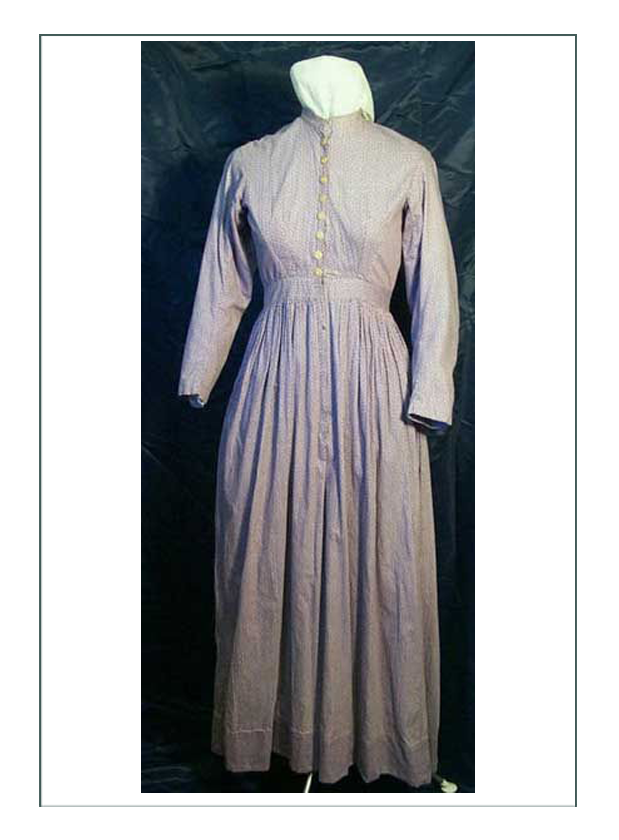
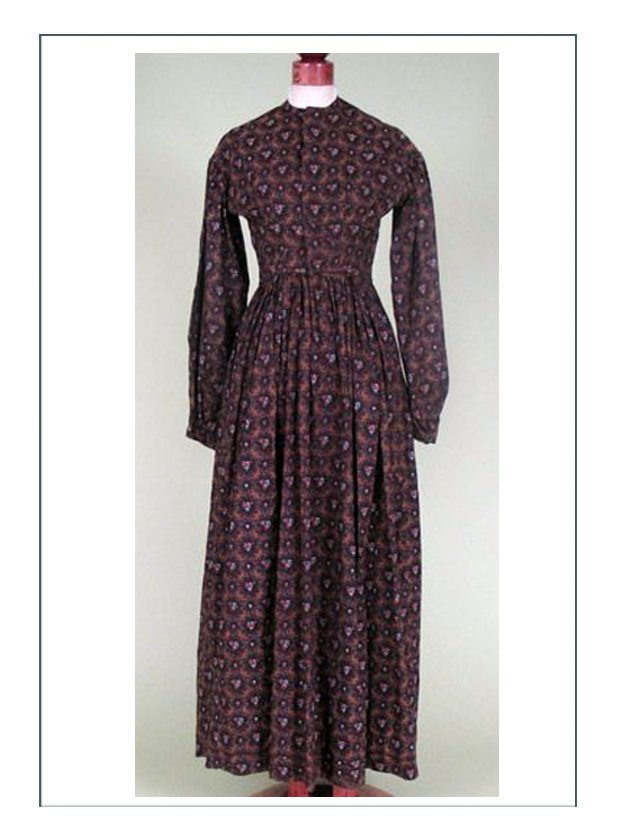
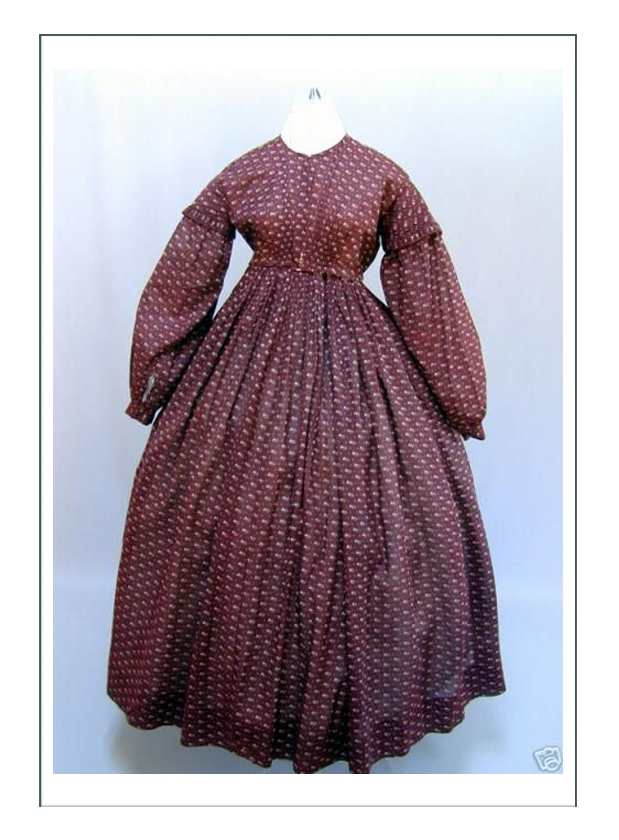
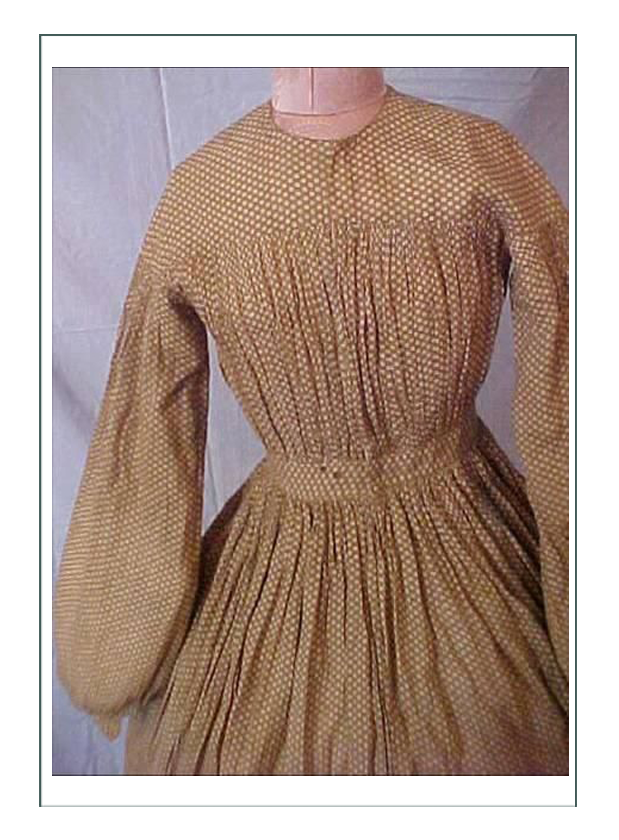
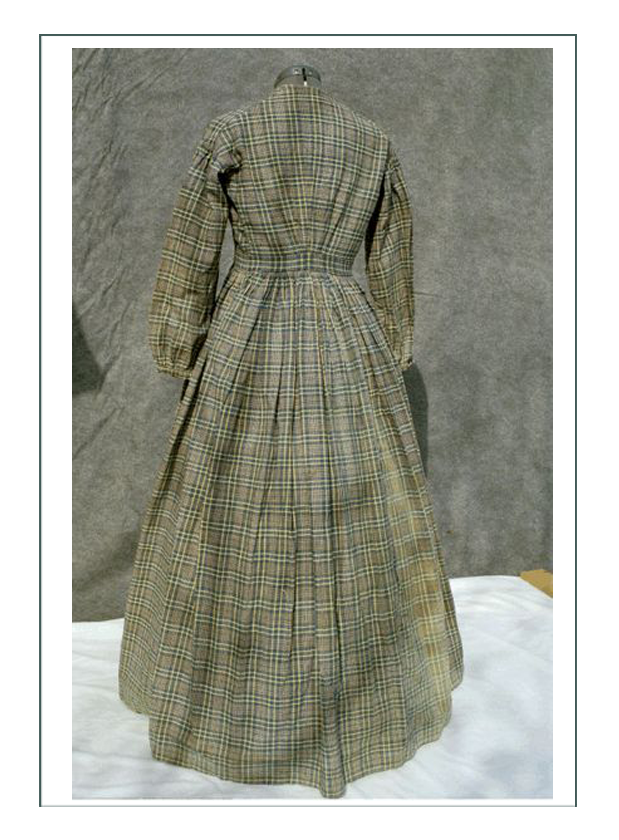
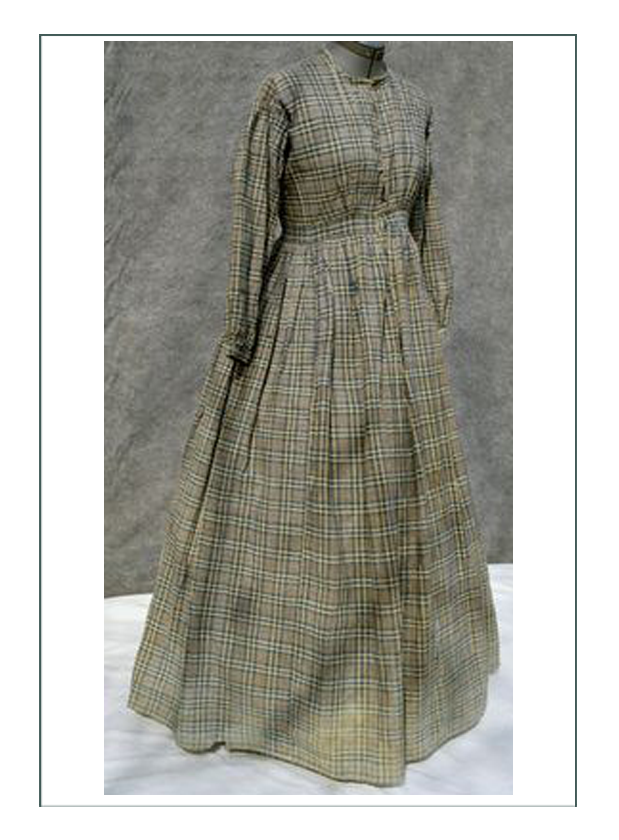
Undergarments and Bonnets:
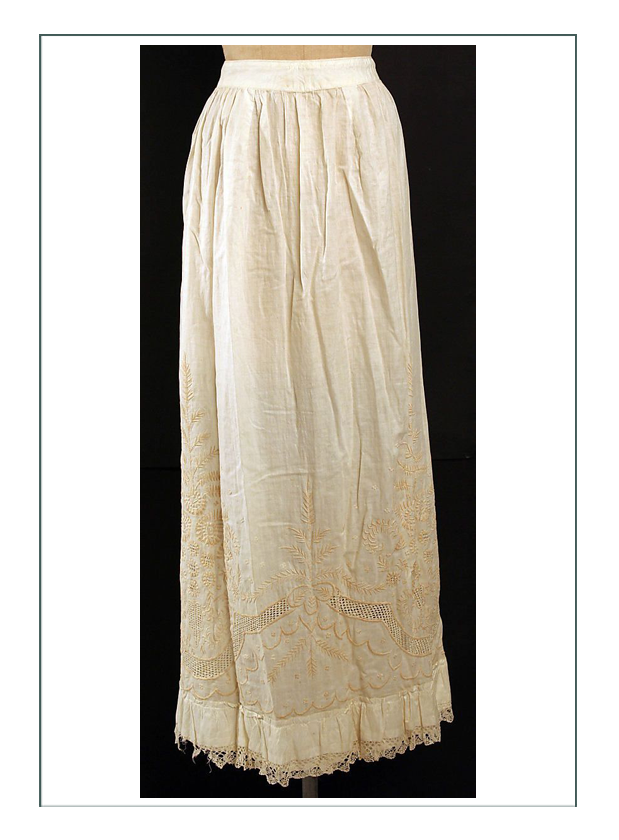
Single Petticoat from 1870 does not allow for the crinoline of the 1860’s; typical of the Pioneer version of fancy dress which would be way more practical
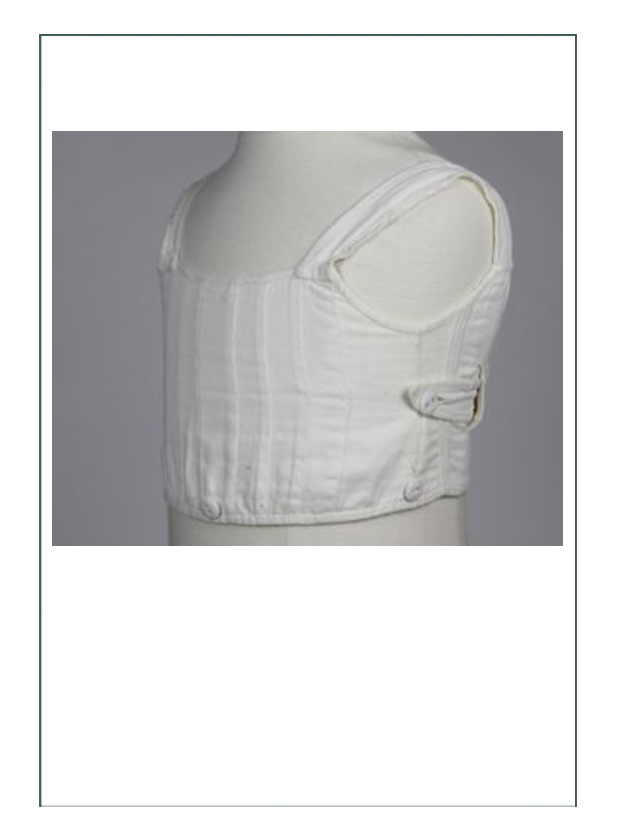
Child’s corset of 1860-80’s; more of a “comfort vest”
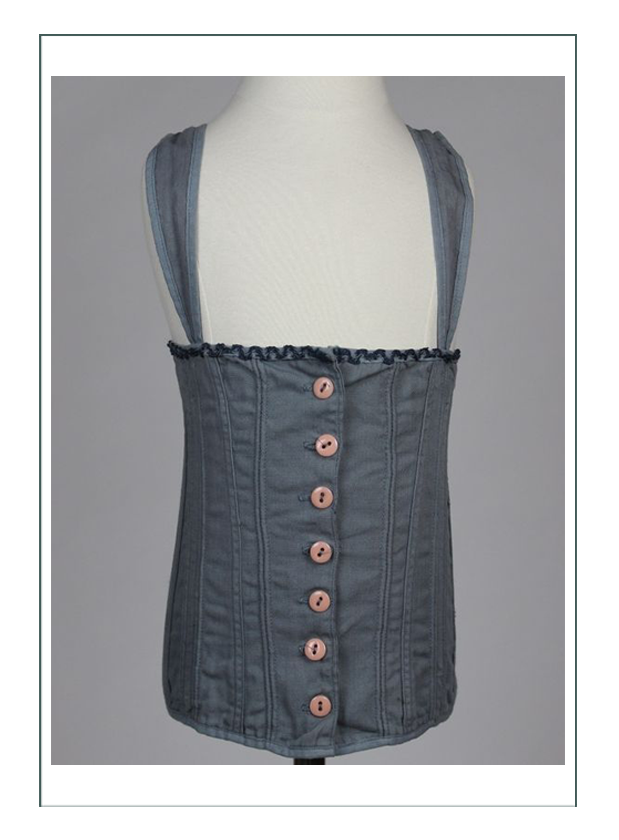
1870’s child’s corset, maybe age 6-10
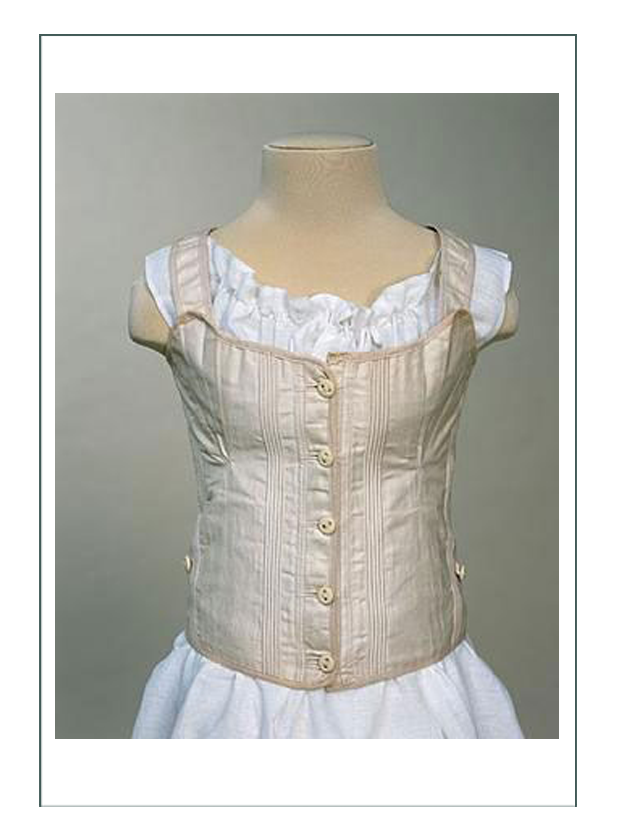
Late 1860’s teen corset for training, ages 8-11 approximate
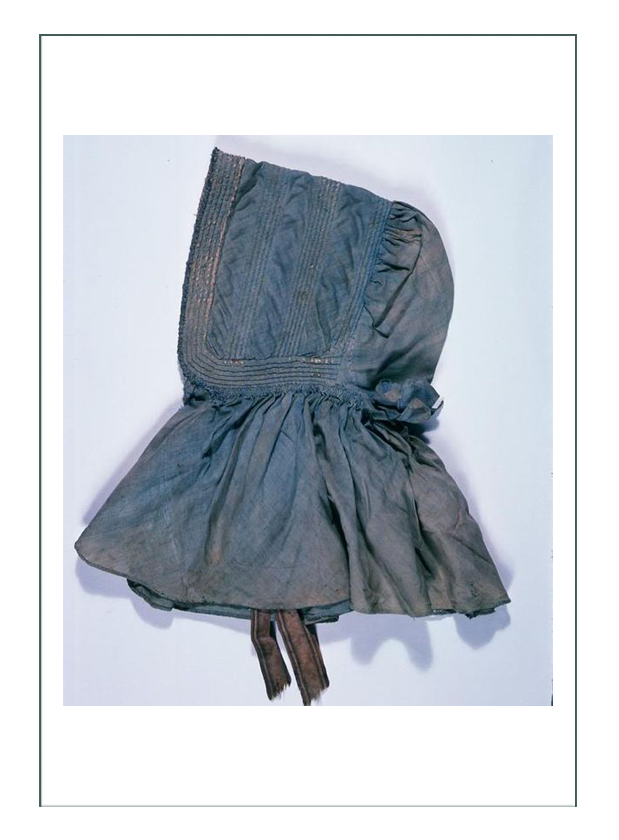
Slat bonnet
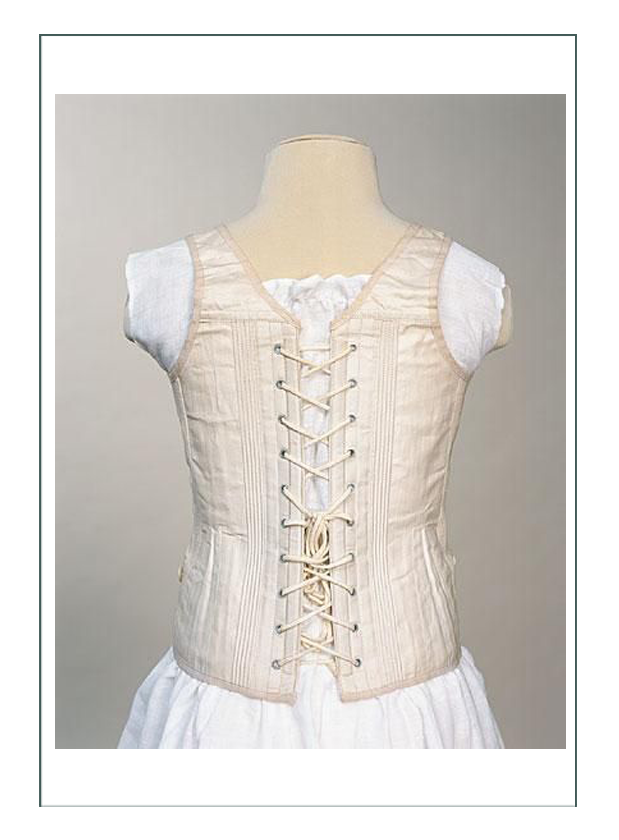
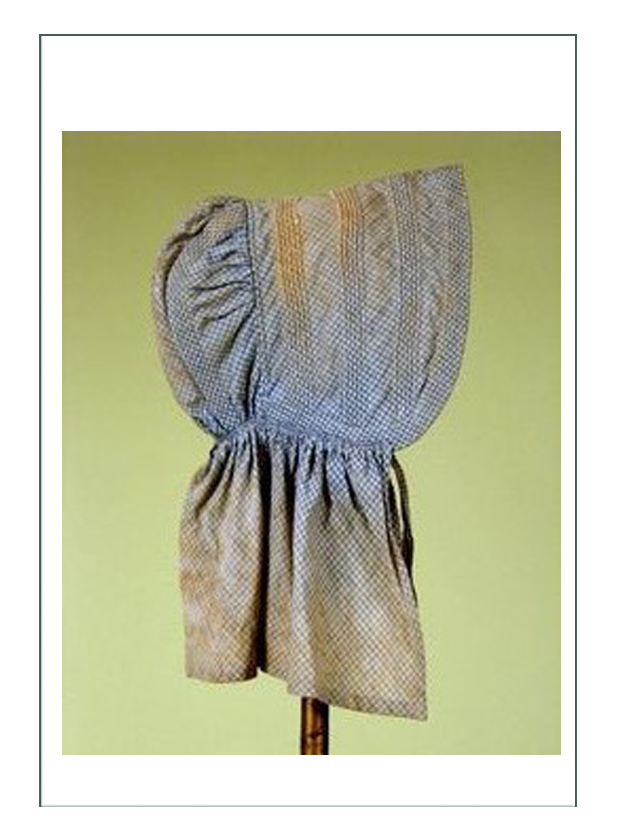
Click to go to Fiona’s Design Development page (next)
Click to go to Fiona’s Historical Research of time & place Page
